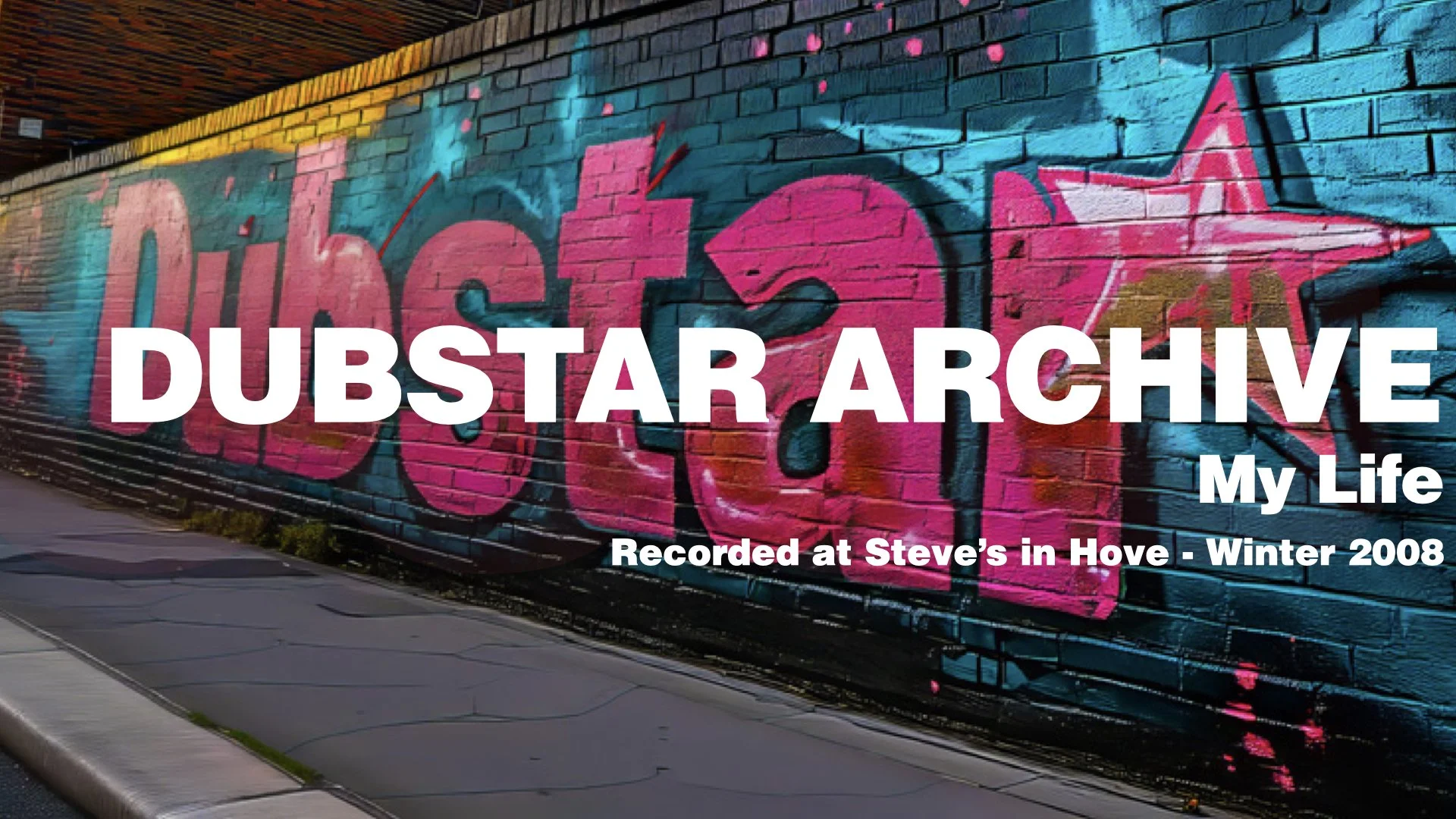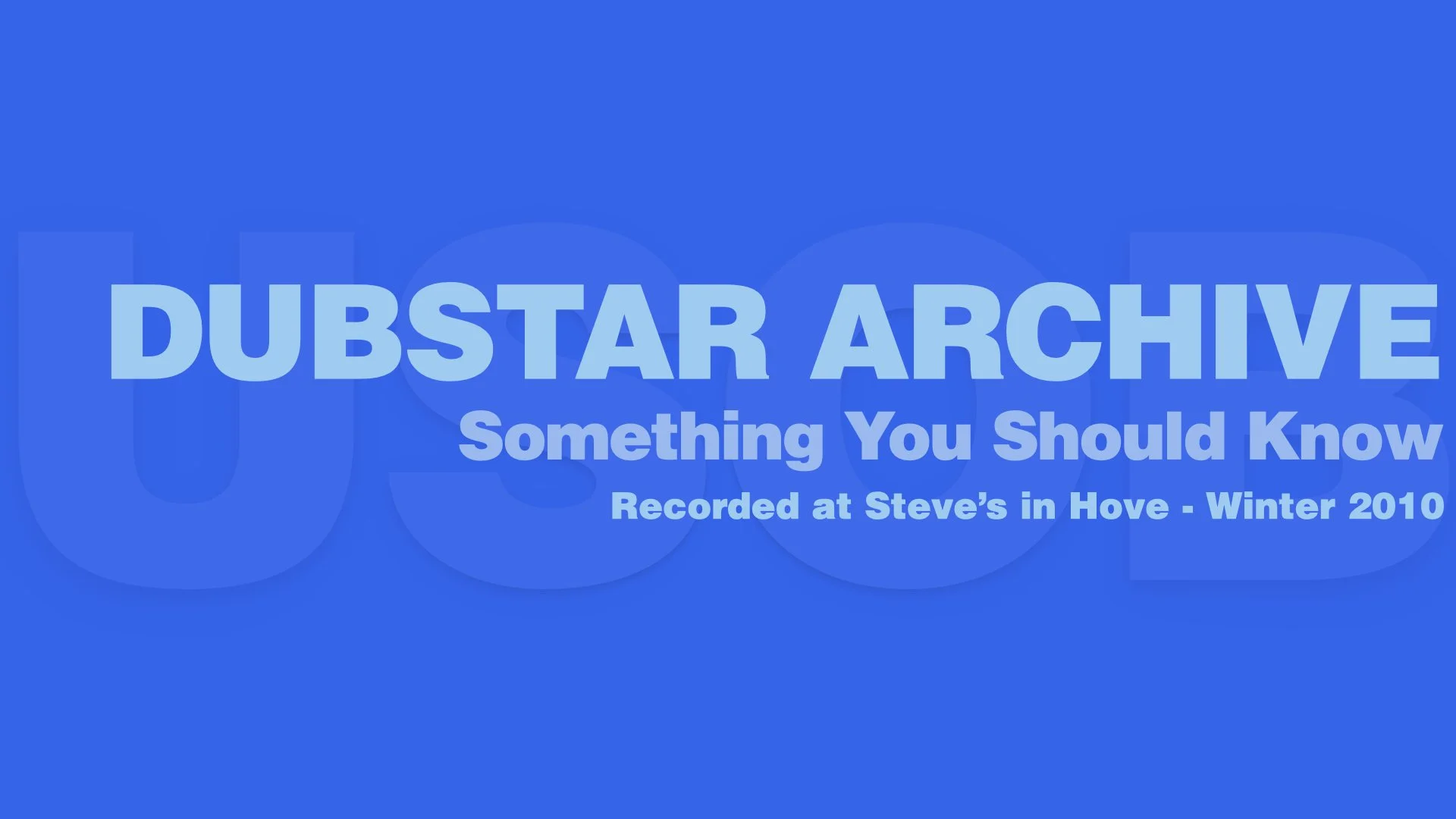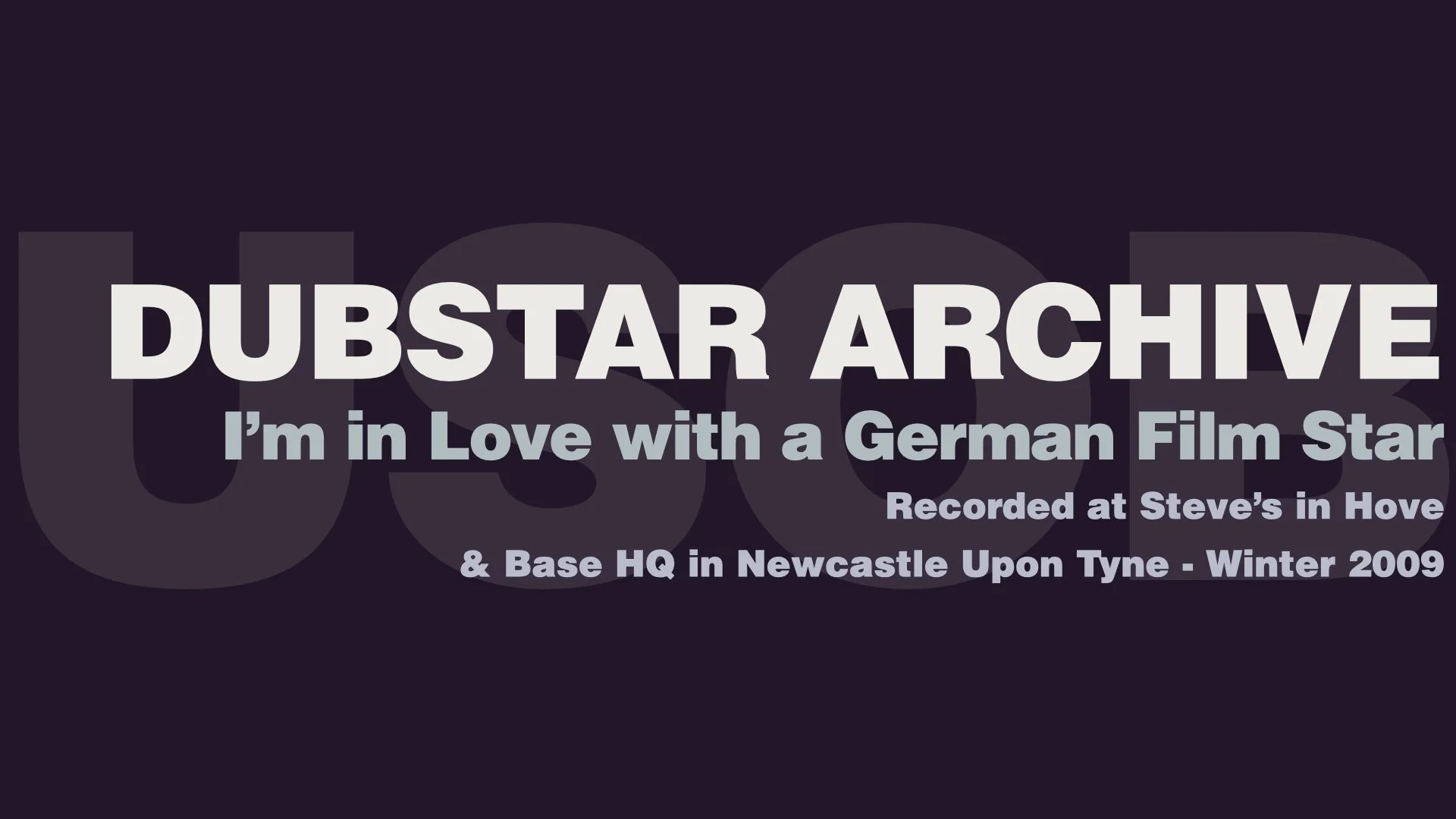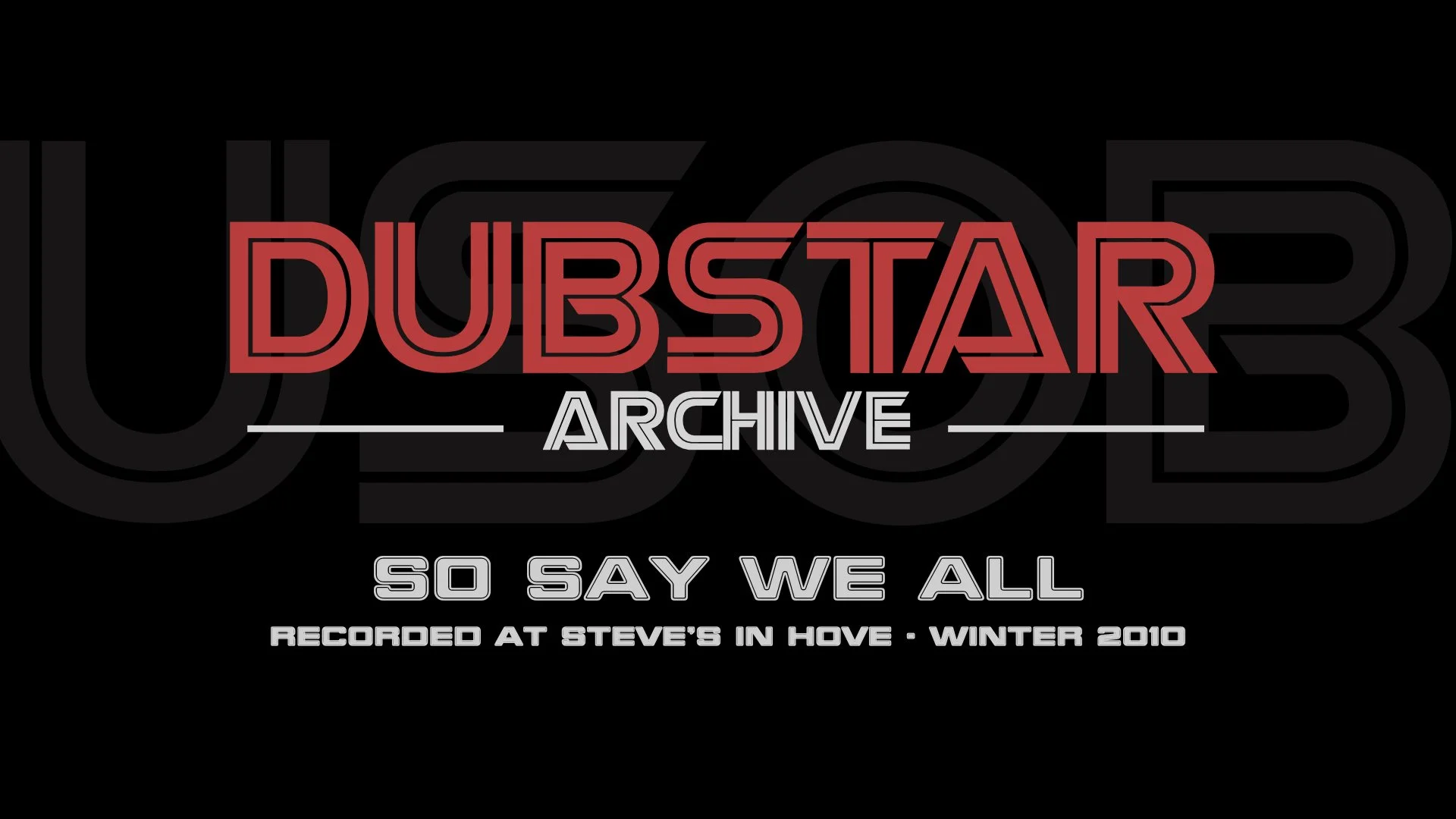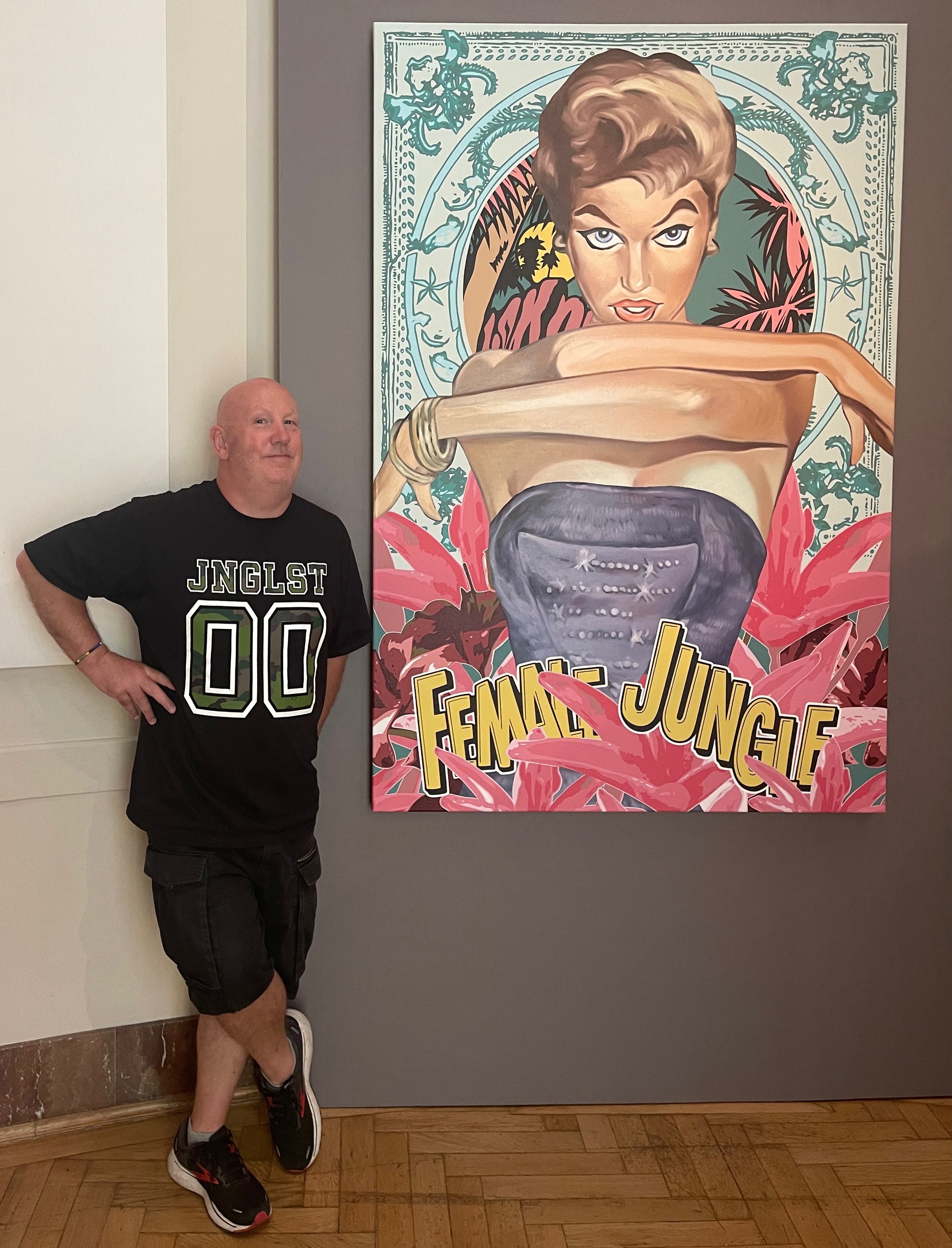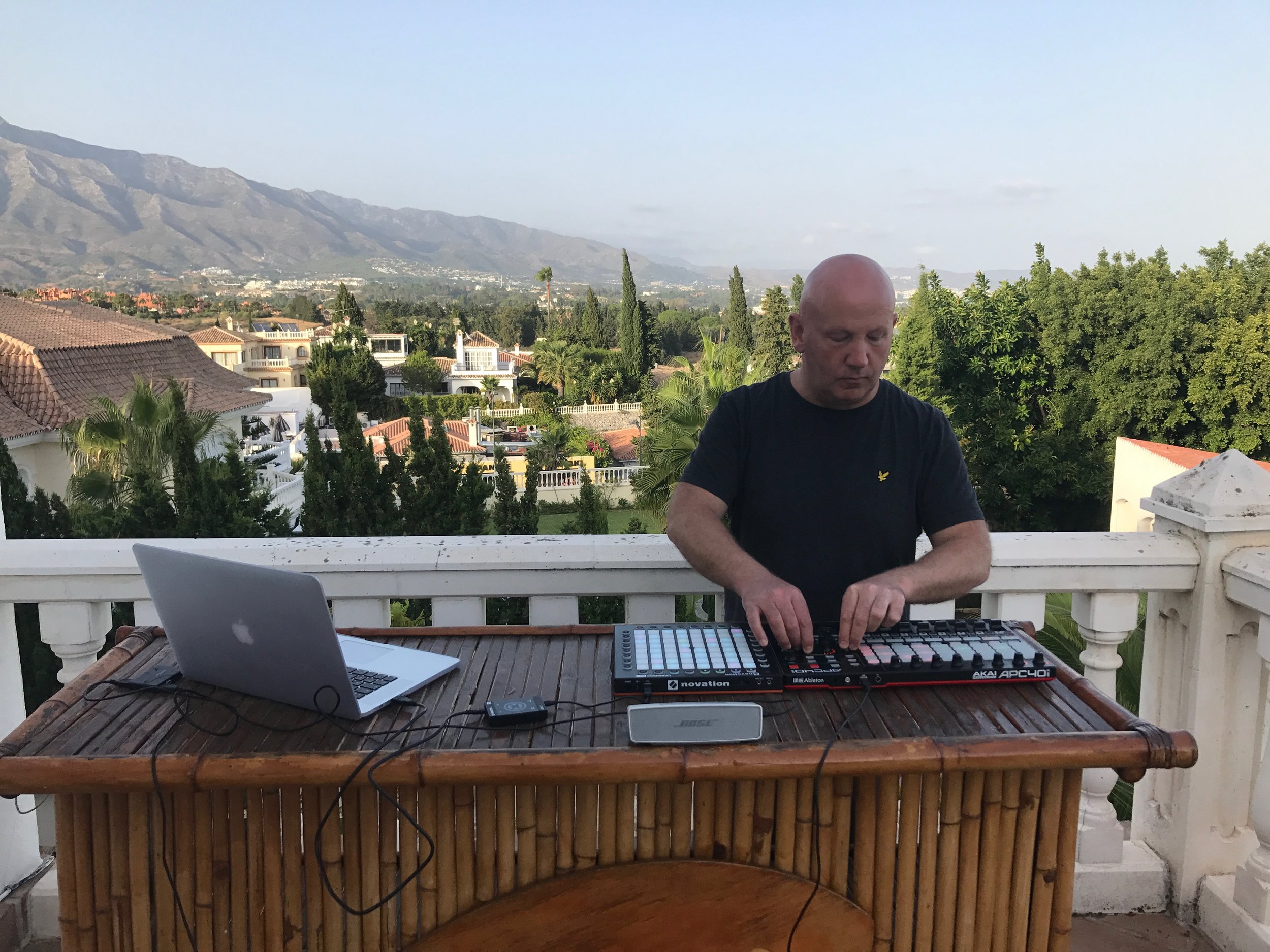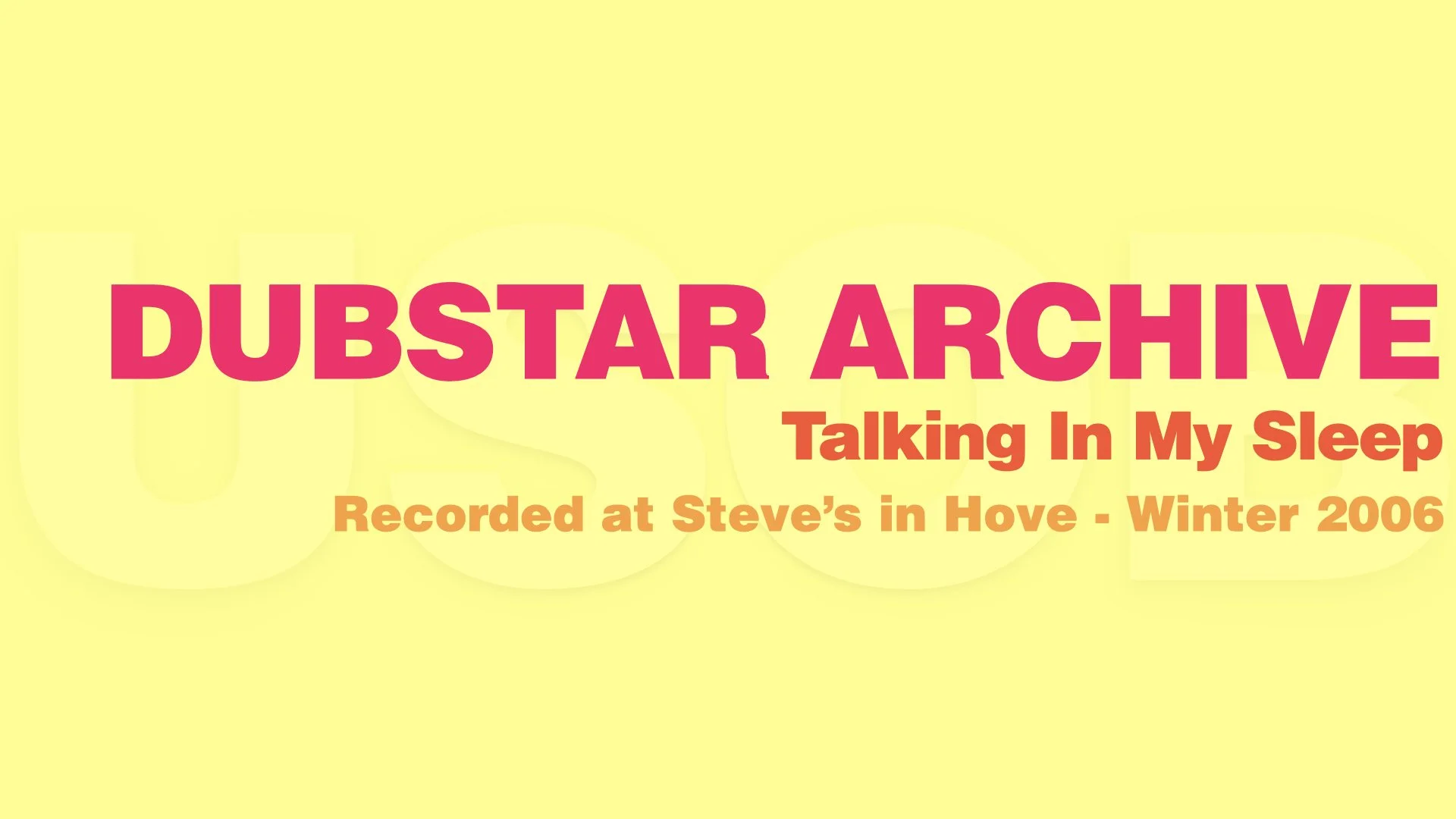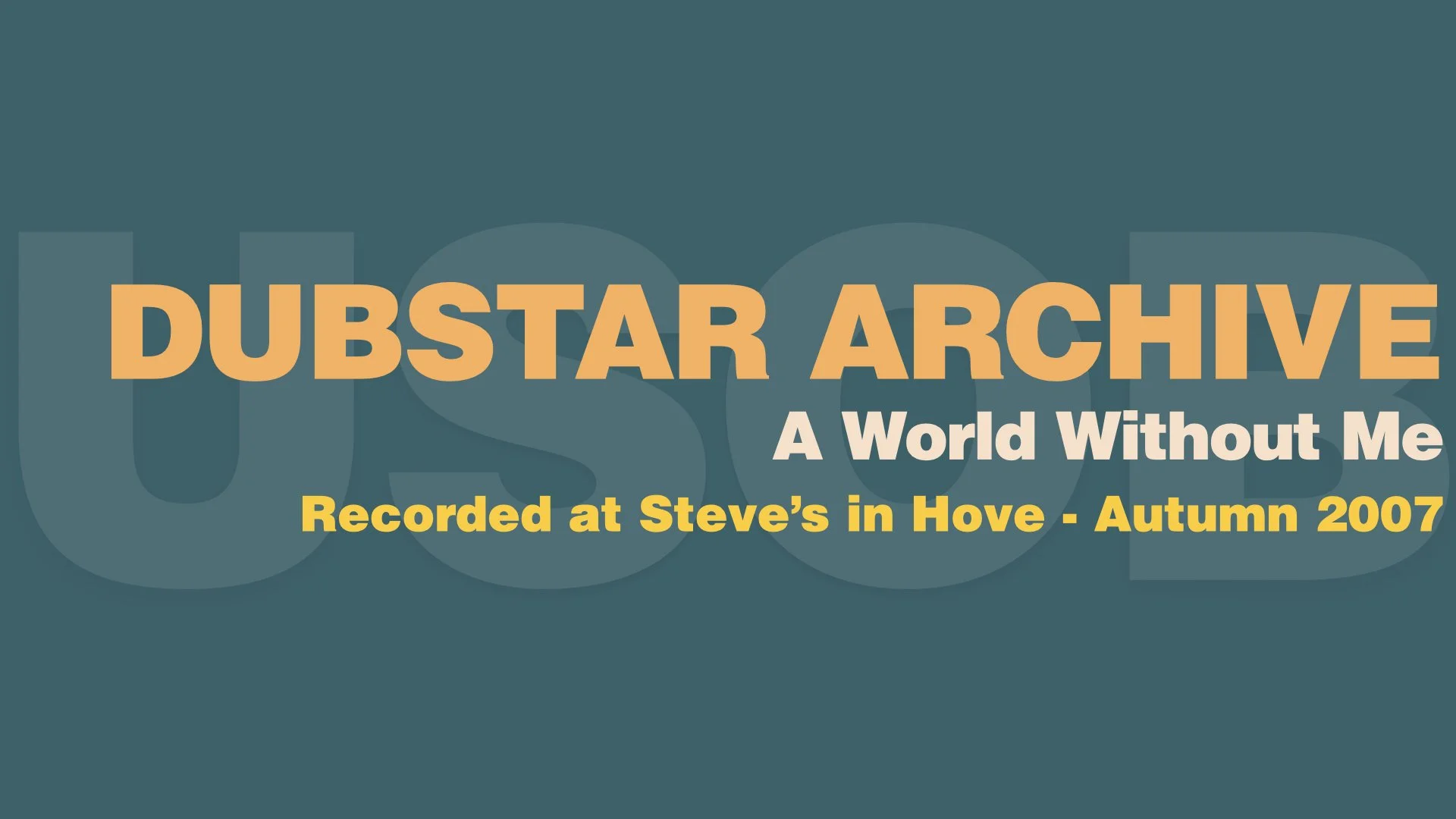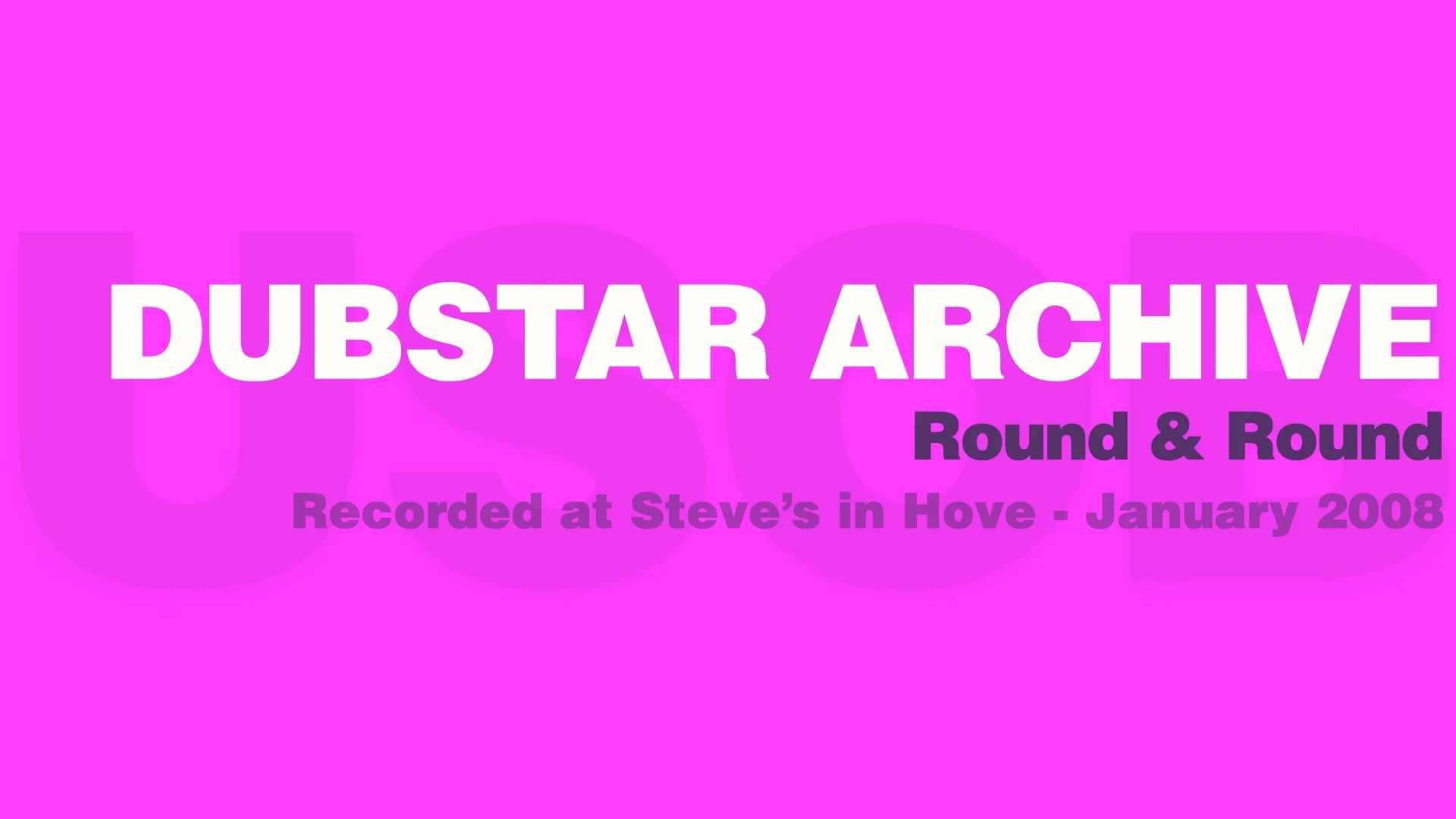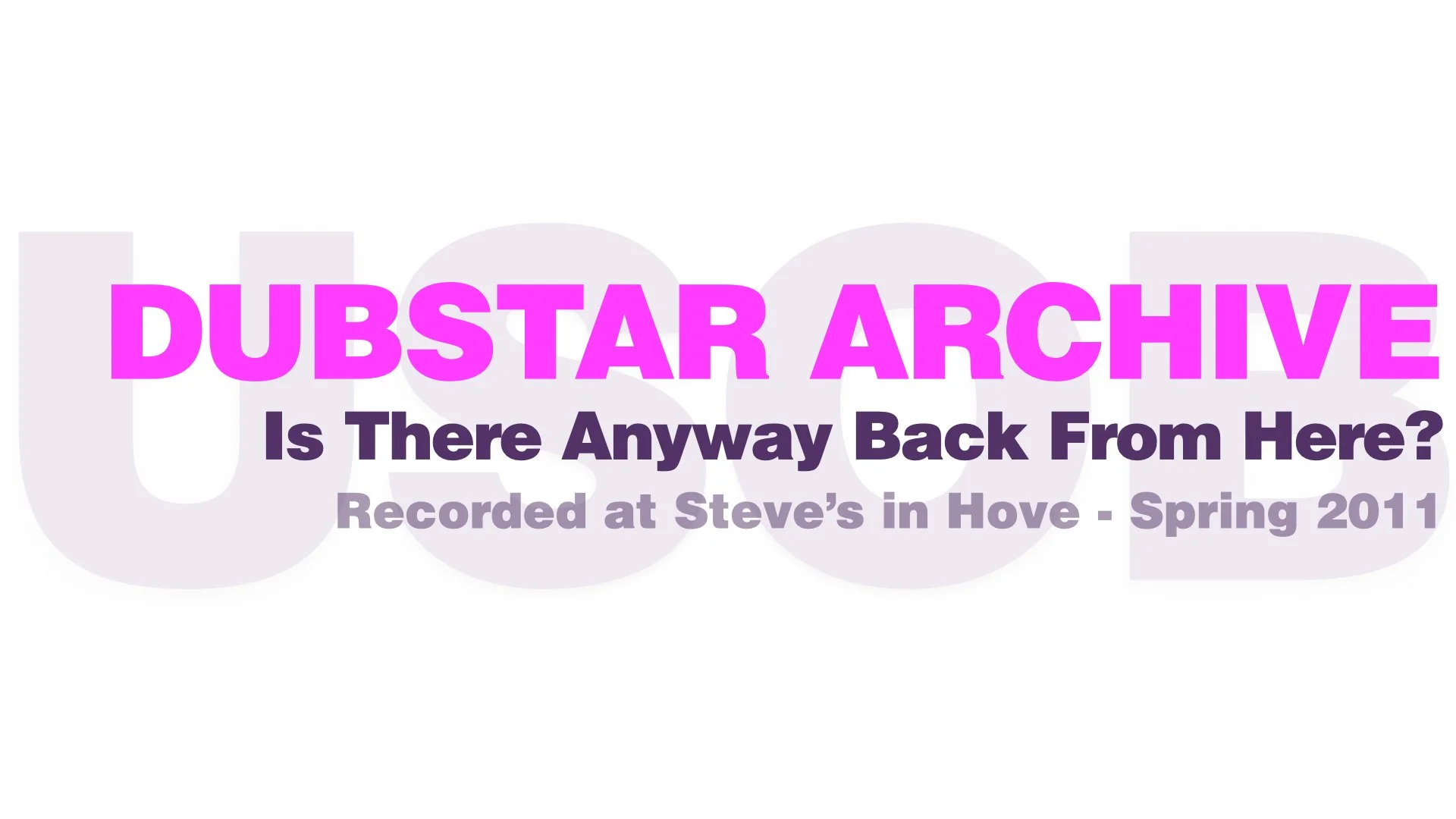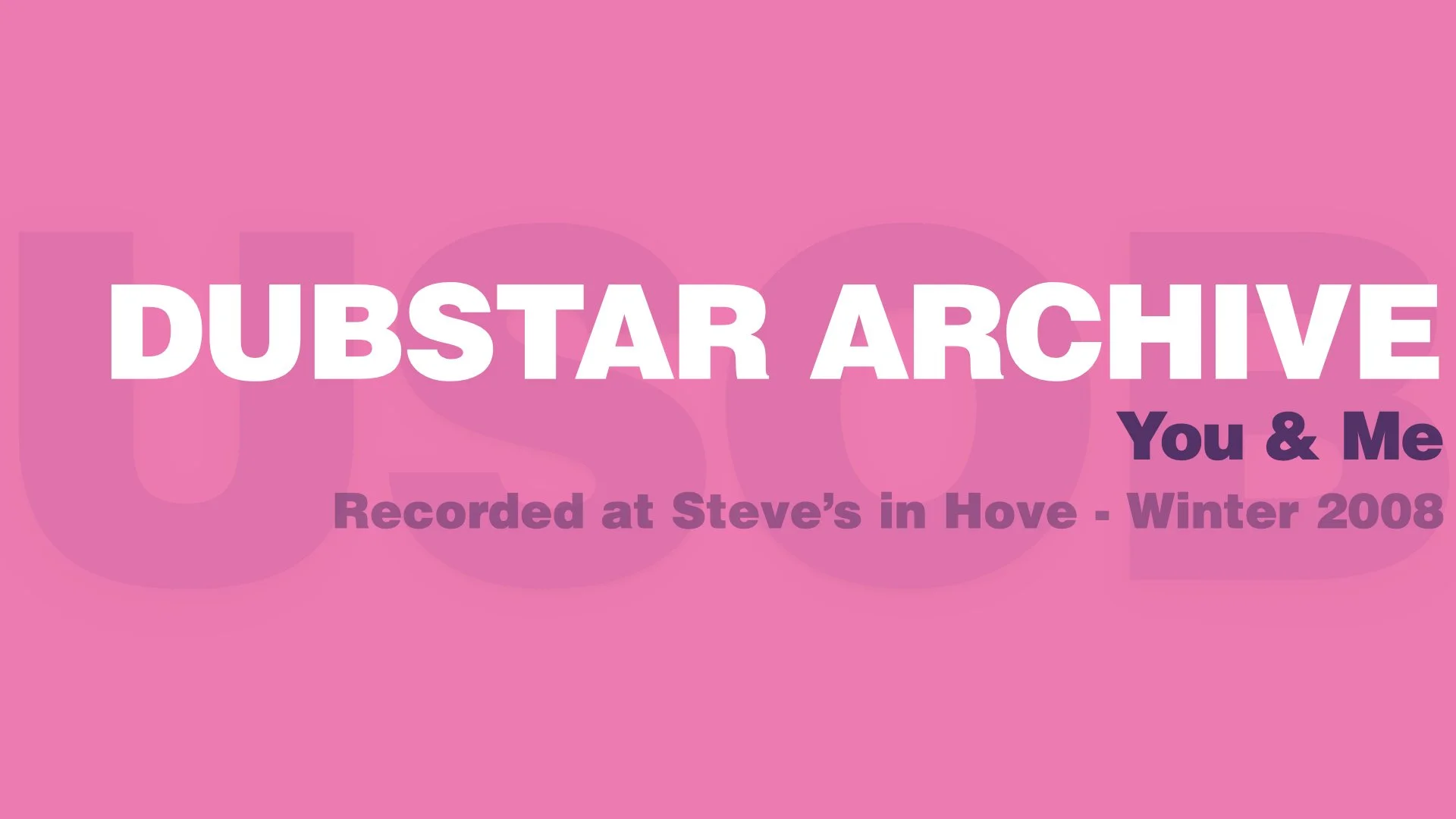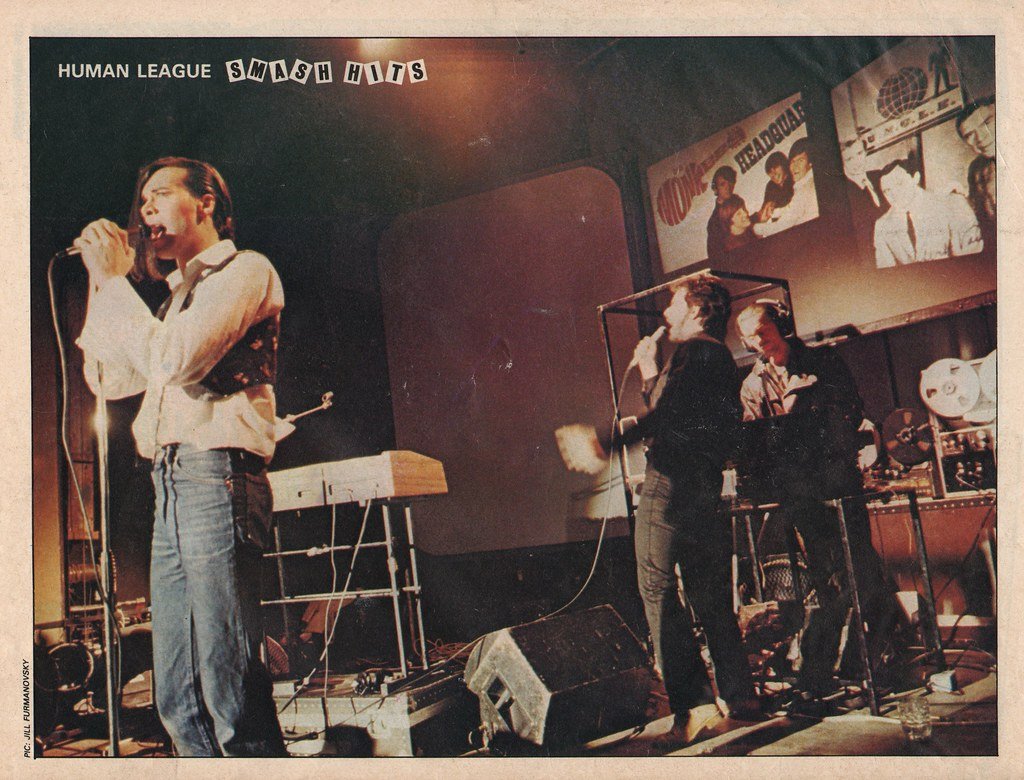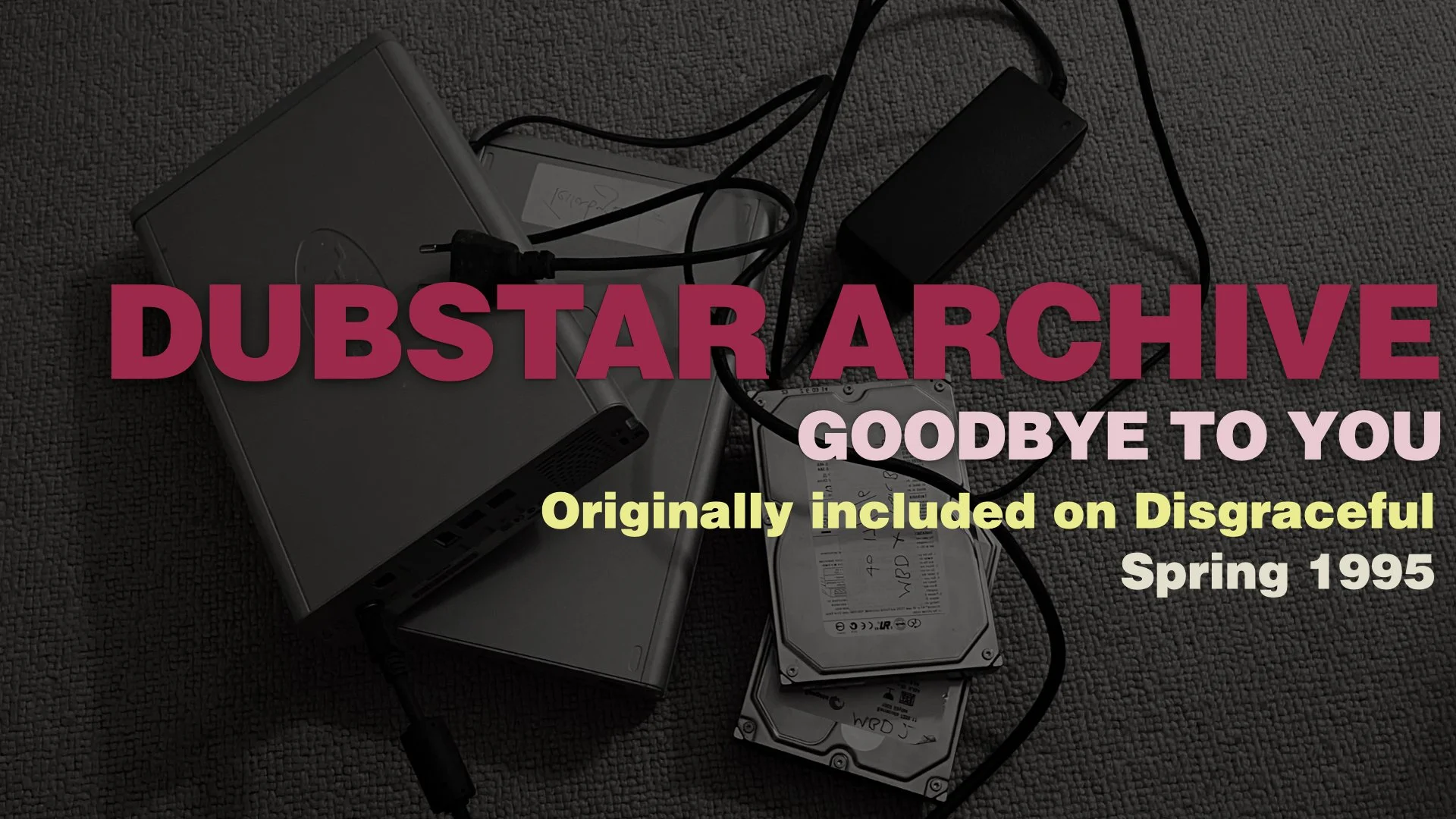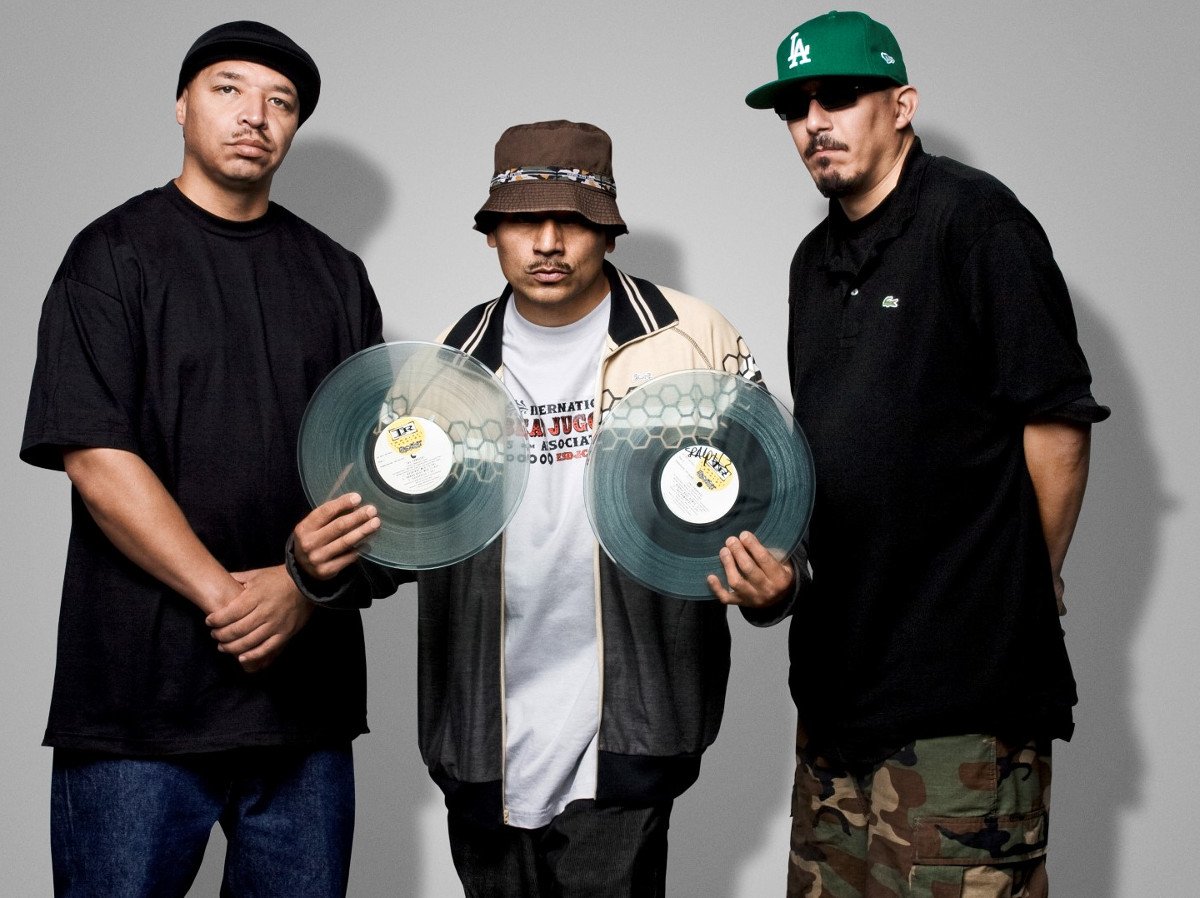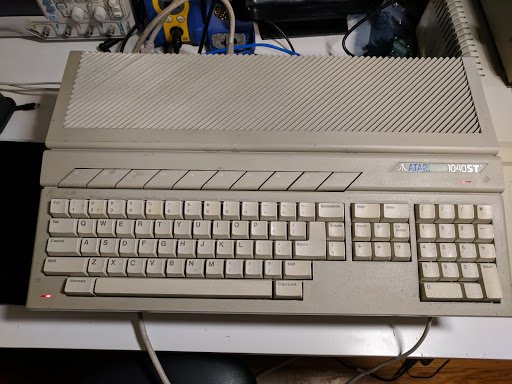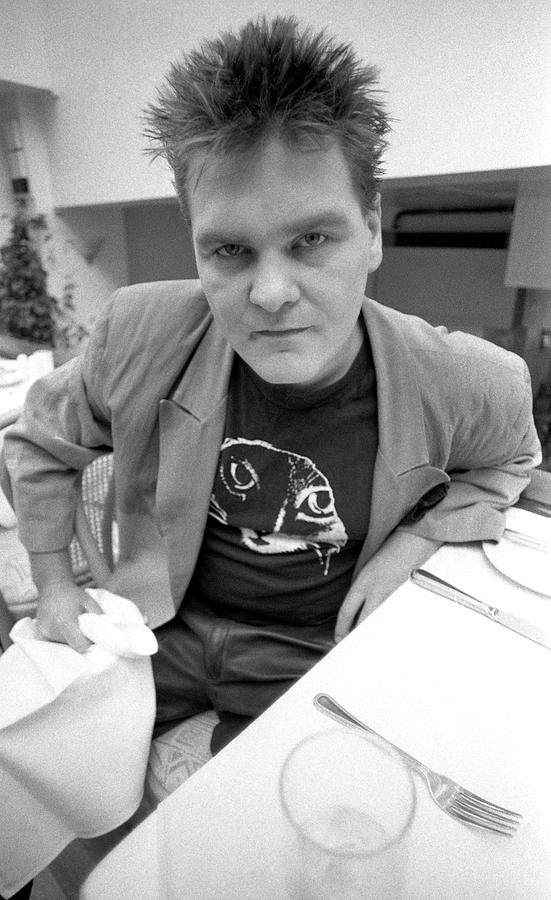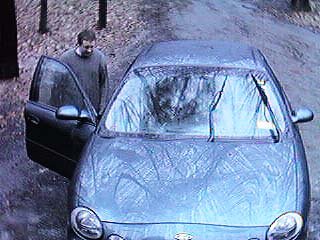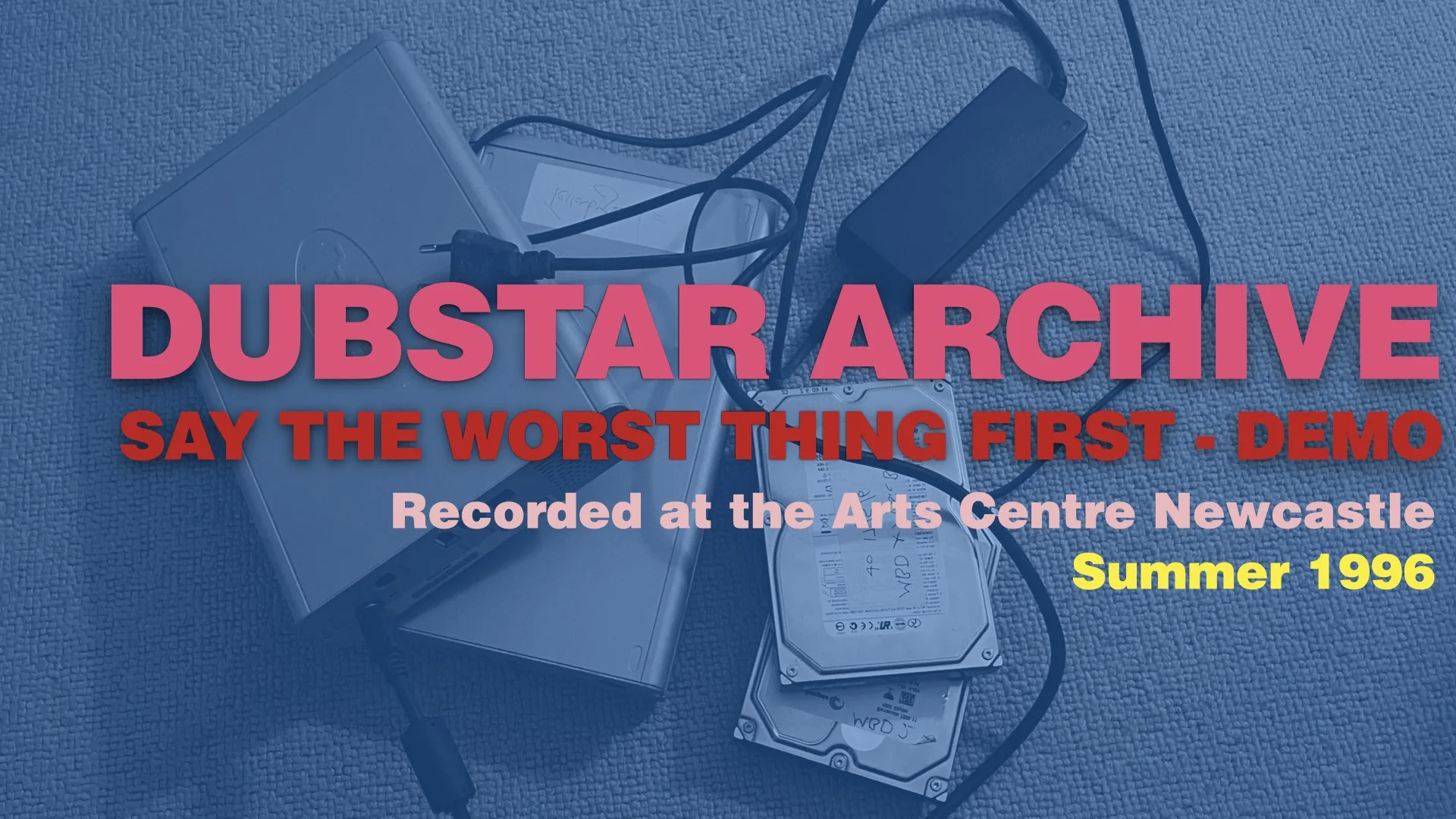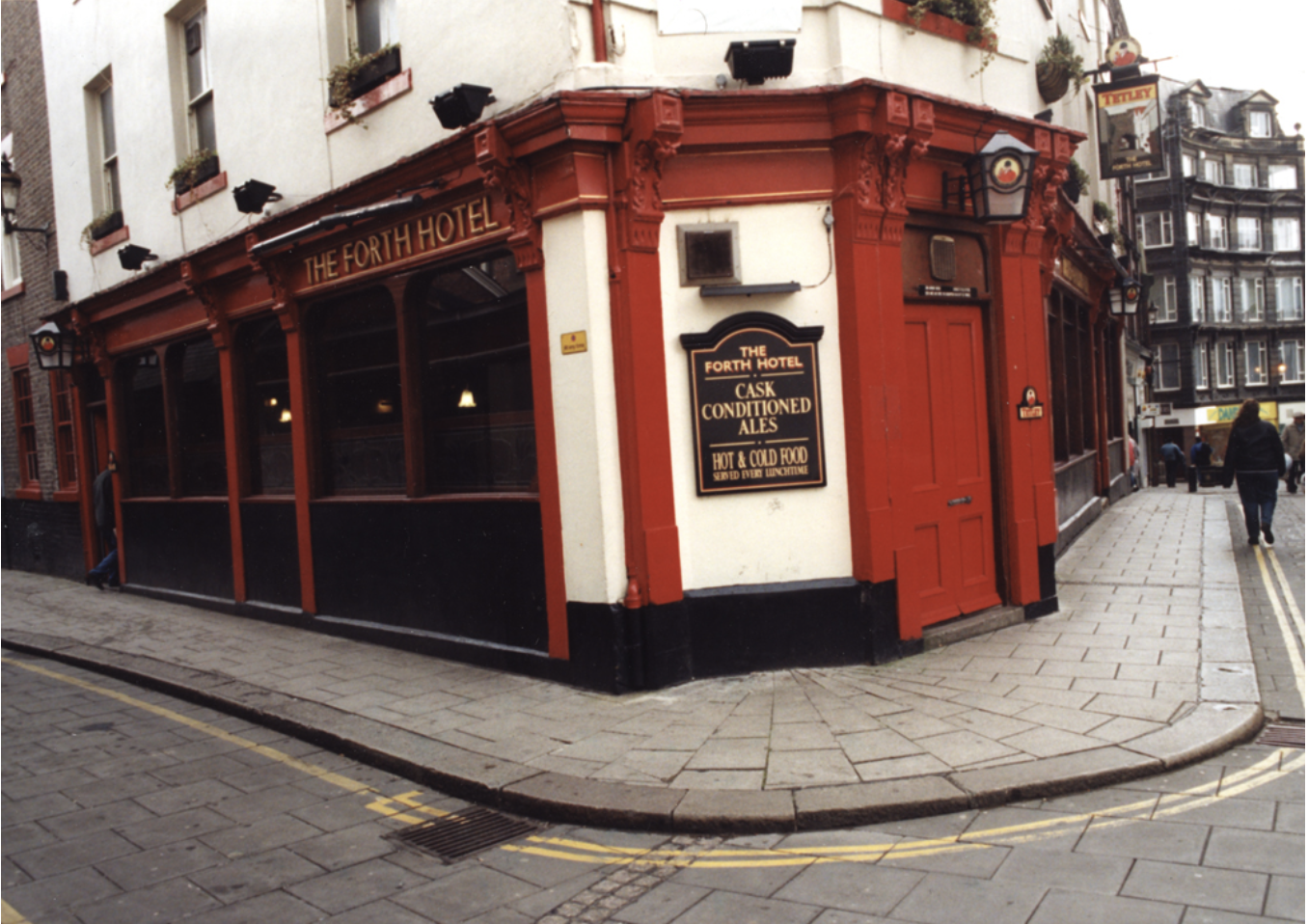Dubstar: MY LIFE
Those with long memories will recall that life was a little difficult all across the world in 2008. The financial crash, including the banking crisis, was turning assumptions about our wealth on their heads. We had experienced a period of sustained economic growth in the UK for well over a decade. This had characterised much of the late 90s and early to mid-00s as a boom time (dot com bubble excepted of course).
But by 2008 the wheels had fallen off. A generation who had grown up borrowing on credit cards and achieving 110% mortgages was facing a new financial reality, and it didn’t look good. We can examine the economics and politics of the situation another time (ideally in the pub) but you’ll find some superb analysis of the banking crisis here, here and here.
On a personal level, things were getting awkward. Friends of mine were landing in real trouble for the first time since the housing slump of the late Thatcher and John Major era. Bankruptcy was a serious option for some, a lifeline, and the situation was so stressful for one that I was commanded to never bring up the subject again.
I didn’t.
I was very fortunate to escape the 1990s without debt and had managed to buy a flat in Hove before the UK housing market went mad. But I did live in a world where I would meet other 90s veterans who had a look of pure fear in their eyes. This was not nice. The party, finally, was over. Now for the life-changing hangover.
This perilous situation inspired me to write the song you can hear for the first time today. My Life is a late Trip-Hop inspired slab of vintage Dubstar. The dub basslines are back (that’s my Roland Juno-106 wobbling along down there). The rolling breakbeats have returned and, for the first time we have the piano and guitar ‘wall of sound’. This shoegaze effect would appear on several other tunes, including this Parralox remix I completed in the same session.
The Roland Juno-106 as featured on dozens of Dubstar songs
On a more technical, songwriting level, I reused an old trick. The verses of the song would sit on one chord throughout, and then I'd break into the chord sequence for the chorus. This creates an enjoyable harmonic contrast between the sections, especially with the bass riff remaining unchanged in the first two choruses. The chorus then takes off in a very Dubstar way.
My Life, like so many of the United States of Being songs, had various incarnations along the way including a mix by famous music engineer and old friend Phil Bodger. I completed the version presented here a little later, where I carved away chunks of the wall of sound to let the vocal shine through. And after long last I wrote something that hit Sarah’s vocal sweet spot and stayed there without jumping around in pitch.
THINKING BACK NOW
I can imagine My Life as the opening song to the first version of United States of Being, much like Stars opened Disgraceful. As songs, they have a lot in common. I also think they serve the same function. What seems melodic and approachable eventually reveals a darker side with Sarah imploring you to ‘hear my prayer’ and to ‘take you on a journey through my life’. Gosh.
I like the way My Life nods its head to Depeche Mode, with more than a passing resemblance to their late career classic ‘Walking in My Shoes’. This is accidental of course, but Depeche Mode was the only act that all three of us liked. United in our admiration, I suppose their influence was bound to poke its head through at points.
Also, I find it fascinating to reflect on how far the world has changed politically and economically since that day. It was one thing to write a little song reflecting on how hard it is to be in debt. But…imagine if we’d known that not only would the UK economy not grow at all between 2010 and 2024, but that the country would eventually be worse off per capita than it was in 2008?
And a final thought... part of the inspiration for My Life was the idea of 1990s pop stars struggling to cope with the reality of the 2000s. Have you noticed how the very idea of pop stars being rich is now reserved for Taylor Swift and a handful of her friends?
I suppose we never had it so good.
This article includes excerpts from DUBSTAR.COM. Want more? You can find the story behind every Dubstar song ever recorded including dozens of unreleased songs right here at Dubstar.com
And don’t forget to follow me on Twitter to be the first to hear new releases and up-to-the-minute news
Dubstar: SOMETHING YOU SHOULD KNOW
Here’s a Dubstar song from the very end of the act’s existence. Something You Should Know (SYSK) was recorded in 2010, developed in 2012, and yet it’s path started a few years earlier.
As with You & Me, SYSK was written by myself and Emma Kirby in South Wales in 2008. In fact, this is the first of a dozen songs that we wrote together. I remember being terribly excited at this result, although I think Emma wasn’t quite so keen. Maybe it was a bit more Steve than Em? I’m not sure, Emma inhabits a very different musical world now and is probably much better off for it. There’s a version we recorded at Peter Gabriel’s Real World Studios somewhere around here too…
Quick story: while Emma and I were eating lunch in the Real World dining room, I overheard a conversation between the drummer of a successful British band (no names, sorry, but they were big in the early to mid-00s and aren’t now) and his producer. You could see that the producer couldn’t believe what he was hearing: they’d been recording this album for nearly two months and needed to go home but the drummer wanted to replace all his drum parts. Every single hit, because they didn’t sound right to him. Maybe do them again, this time in a different room? Was that going to be a problem?
Well, if you’ve ever produced a band, you’ll know that the entire record is built on the drum playing and sound. You can’t simply replace the drums without ruining the feel of everything else. And here he was, asking to scrap it all and start again. I felt for the producer and remembered with relief why I hadn’t been in a band for fifteen years. When the record came out it was panned by the critics too…the drums sounded great though.
The Dubstar version of SYSK was originally similar to the sketch I’d put together for Emma and myself. Pianos and guitars were everywhere, but it was a bit trad…fine, but nothing special. It reminded me of Keane, which is normally a good thing but not in this case, the song never took off. I was quite disappointed with the results and forgot about the song for a year or so.
But as I was putting together the music for Circle Turns (the first new self-penned and released Dubstar song in over a decade), I took another look at the arrangement for SYSK, had a flash of inspiration and updated it for the album. The two songs have a lot in common, there’s the Roland CR-78 drum machine, the Robin Guthrie shimmering guitars, the deep bass notes from my Roland SH-101 and Korg MS-20 and a general sense of floating around in space.
The big difference was that, unlike Circle Turns, SYSK was a proper song written in advance in an actual writing session between two songwriters. Not being a fan of piecing tunes together in the studio (something you can easily hear), I think that writing moment, a singular moment of creation rather than cobbling together ideas makes a big difference to a song. I wonder what you think?
Thinking Back now
SYSK works well but I’m not sure it would have made it onto the finished album. Hearing it now it feels like a B-Side, or maybe a bonus track? That chorus is great though, I still get a shiver of excitement whenever I hear it.
And it fascinates me to revisit the sound of those writing sessions from the 00s. There was something vibrant about that decade, a sense of ‘nothing to lose, so we can do anything we want!’ that I’d missed in the 90s. I’m reminded of these lines from the fabulous Kitchens of Distinction’s song Sand on Fire:
We are so alive, so inspired
When we were young we were careful and prudish
Now we are creased we're trivial and foolish
When we were young we were prayerful and prudish
Now we are wise we're waltzing on fire!
This article includes excerpts from DUBSTAR.COM. Want more? You can find the story behind every Dubstar song ever recorded including dozens of unreleased songs right here at Dubstar.com
And don’t forget to follow me on Twitter to be the first to hear new releases and up-to-the-minute news
Dubstar: I'M IN LOVE WITH A GERMAN FILM STAR
Last week, while putting up ‘Don’t Ask’, I realised there isn’t a high-quality upload of this Dubstar song anywhere on the web. So I’m putting that right today.
In many ways IILWAGF might be the most important song from the entire Dubstar archive, as it was our first bona-fide release in a decade, the first since the split after Make It Better. On the other hand, it was yet another Dubstar cover, and as Chris pointed out at the time, if the first song you hear from Dubstar in a decade is a cover then ‘Dubstar can fuck off’. It’s one or the other I suppose?
We were asked to contribute a song for Buffet Libre, a Spanish record label. They were putting together a compilation of their favourite artists performing covers for Amnesty International…how could we say no? As I’ve mentioned previously, Sarah wanted to record Kirsty MacColl’s ‘There’s a Guy Works Down The Chipshop Swears He’s Elvis’, but I wasn’t keen. Largely because I couldn’t see how Kirsty’s rock and roll pastiche could be transformed into a Dubstar song. And there are much better Kirsty songs. I suggested we did The Passions’ classic instead.
IILWAGF already sounds a lot like a Dubstar song to me, wish I’d written it! To speed up the process of recording I built the arrangement around The Passion’s original single in Apple Logic, including the tempo variations, which was a little naughty. But it was a cover.
Recordings happened at my place on Adelaide Crescent in Hove with Sarah and Gavin’s studio Base HQ behind Central Station in Newcastle with Chris. And South Central mixed it back in Brighton. And that was it, the first new Dubstar recording in a decade. A cover.
Thinking Back now
I think this was the right song to pick, it suited the compilation well and fitted nicely into the Dubstar story. But every now and then I hear a song and think ‘oh, that would have made a brilliant cover, I wish we could have done that instead’. And with that in mind, I’ve made a little Spotify playlist of songs that I think we could have done. See if you can imagine Dubstar versions of these.
This article includes excerpts from DUBSTAR.COM. Want more? You can find the story behind every Dubstar song ever recorded including dozens of unreleased songs right here at Dubstar.com
And don’t forget to follow me on Twitter to be the first to hear new releases and up-to-the-minute news
Dubstar: DON'T ASK
By the end of 2010 a few things about the Dubstar comeback were becoming obvious:
We had too many new songs
I hadn't finished enough of them
We needed to play live. A lot, as soon as possible. And…
We needed to introduce fresh youthful blood into the process
Why was playing live so important? It was and remains fundamental for the success of an act. You can tell when you hear an album has been assembled in the studio. The songs often sound incomplete and half-baked.
So playing a new song to an audience is a crucial step in its writing. There’s a feedback loop between you the writer, you the performer and the audience. You take your new creation out to the world, and how it unfolds in a live setting enables you to return to the song and improve it. It’s not about the response of the audience per se, but how YOU feel about the material now that it's 'alive'.
This is why comedians do warm-up tours, DJs test-run their new tunes in the clubs. It’s also why bands include new songs in their live set before recording them.
But if you don’t play live in many ways your song is incomplete, lifeless. Anyone can put tunes up on the internet or get some vinyl pressed. But if you’re not out there playing your work live ‘you’re not serious people’ as the late Logan Roy would put it.
So we had to do it. And we did, but that wouldn't solve the fresh blood problem. That fell upon the shoulders of my old friend Dex Lush. He'd already put us in touch with South Central (who mixed I’m In Love WIth A German Film Star). This time it was one of their friends, Maltese producer Daren Taliana.
Tim Mason, Daren’s alter-ego
Going SOUTH
Daren would add some pizzaz to my existing production and avoid the new Dubstar material sounding like it was made on a laptop.
We’d had sessions at Gavin’s BASE HQ studio in Newcastle and plenty in my place in Hove. But it had been four years, and I’d already written and produced dozens of songs for the Dubstar comeback. We needed to exceed our previous sonic limitations. What we needed now was a refresh and collaboration with a third party. Like we’d had with Graeme Robinson all the way back in the Disgraceful era.
Daren Taliana pre-swim
So Daren spiced the sound up by adding a contemporary, dancefloor-friendly shine to the existing arrangements. The results from his work in Brighton sounded great. The plan was to finish the sessions in Temple Studios, Malta in the late summer of 2011.
Chris and Sarah were absent from the production process as had been the case for the previous three albums, but this time I made the mistake of being absent too. I’d been gigging and wasn’t able to fly down to Malta until Sunday night. By the time I arrived, we only had a couple of days left in the studio to complete the mixes. Rookie mistake!
Despite this the results were great. Daren had mixed like a true professional, his hard work shines a very different and bright light on the songs that were proposed for the second attempt at United States of Being. Grazzzi!
Thinking Back now
And yet these mixes weren’t released. Collaborating with Daren was a terrific move, the problem was Dubstar wasn't moving. Somehow even at this late stage there was still no agreed plan to relaunch the act, only to get some recordings finished. And still no plans for playing live. I’ve written this before, but I can’t overstate how difficult it is to be in an act where the three members live in different cities hundreds of miles away from each other.
So despite all this great work, the lack of a plan meant momentum was lost again. Later that year I holed up and completed the work on the United States of Being songs alone.
This article includes excerpts from DUBSTAR.COM. Want more? You can find the story behind every Dubstar song ever recorded including dozens of unreleased songs right here at Dubstar.com
And don’t forget to follow me on Twitter to be the first to hear new releases and up-to-the-minute news
Dubstar: So Say We All
Steve Hillier in Prague, July 2023
“All that I was meant to be
Every way that time has changed me
All that I was meant to do
Every word I said that was not true
And all that we leave behind, all we resign
Like a child in my arms
All that we leave behind
Falls to dust
And sand in my hands and drifts away
But it stays while you learn to pull through
All that’s owed to me
Everything I wanted, haunted by
Fights that I regret
To all the ways I’ve grown, I’m now in debt
To all that we leave behind, all we resign
Like a child in my arms is
All that we leave behind
Crumbles to dust
And sand in my hands never goes away
It stays while you learn to live again”
I’ve written here about how SSWA was written in Christianhavn in Copenhagen.
It’s notable how many songs I wrote for Sarah deal with loss, and this is another. But So Say We All is not a sad song. It’s learning to live in the presence of what was. To accept and celebrate what we can’t change. All that we’ve done has value.
SO SAY WE ALL?
So why did I call the song So Say We All, when it’s not mentioned in the lyric at all? In the TV show Battlestar Galactica, the phrase ‘so say we all’ is used repeatedly. It’s an affirmation, an agreement, much like the word ‘amen’, but more emphatic and usually (but not always) said by a collective. There are plenty of science-fiction references throughout Dubstar, our first release was a song called Stars. It felt right that the last song would reference something else you might find in outer space…and what better way to end an album than with the sound of collective agreement?
DANISH ENDING
At the end of SSWA you can hear the ghosts of other tunes that were to be included on United States of Being. Here’s a handy list of the songs whose vocals are featured. See if you can spot them all.
Yours truly, returning to Christianhavn’s best known district in 2022
Is There Anyway Back From Here?
My Life
It’s You, It’s Me
Gemini
Interpretation
Window Pain
Interpretation
Hit
From the Front to the Back
This article include excerpt from DUBSTAR.COM. Want more? You can find the story behind every Dubstar song ever recorded including dozens of unreleased songs right here at Dubstar.com
And don’t forget to follow me on Twitter to be the first to hear new releases and up-to-the-minute news
Dubstar: UNDER MY THUMB
It wouldn’t be a Dubstar recording session without a cover song.
DJing at the Villa in Puerto Banús 2019
Sarah was back in contact wanting to reform Dubstar again after the debacle of 2008. As I’ve mentioned, I wasn’t keen but, in the spirit of never saying never, I started writing and recording. The sessions were productive, and include some of the best Dubstar songs ever. Yet we never recovered the same positive vibe, the team we’d assembled for the relaunch had drifted away and there was a latent sense of anxiety about the process. This dread lasted for years.
Despite this, it did feel as if we could start again, without the legacy commitments getting in the way. Hmmm...
UNDER MY THUMB
It’s an odd song for Dubstar to record though. I’m not much of a fan of The Rolling Stones, and there was something in the lyric that felt…, a bit dodgy? So the main reason we recorded Under My Thumb will remain lost to the ages. Sorry about that, but I can give my side of the story.
With the end of Dubstar in 2000, I started travelling abroad for work. A lot. This coincided with us having a family villa in Puerto Banús, where I kept many of the hard drives of the Dubstar Archive. I loved it there and spent the best part of nineteen years commuting between Spain and Brighton. I even picked up some Spanish. Te extraño, Puerto Banús.
There are many stories to share about this time, some of which are legendary. The weekend our next-door neighbour was arrested on the tarmac at Malaga airport and the entire Spanish media descended on us, complete with TV crews and microlights.
It was one of those situations where you quickly realise it's better not to get involved.
By way of contrast, one of my favourite stories is from 2015. Twelve (no exaggeration) Estonian soldiers arrived for a party weekend in the villa next door. They were as loud as a squad of squaddies could be. They were, to put it politely, having a bloody good time. I’ve not heard as much Reggaeton before or since.
So on morning number two at something like 4am, I went round to demand them to stop with the music, for pity's sake STOP. I was expecting some kind of standoff, one middle-aged Brit versus Estonia’s finest on leave from the Russian border. What I received was a polite apology and an instant cessation of hostilities. Silence. I didn’t hear from them again. The following day there were smiles and hellos in the street too.
I reflected and checked my prejudices after that incident. No problems with Estonians, I’ve had some great times with our Baltic neighbours. No problems with soldiers, I’d grown up around RAF staff. It was just…I was expecting a mouthful of abuse from a bunch of twenty-somethings. The kind of response I would anticipate getting in Brighton. Turned out the young adults of the 2010s could be perfectly civil…all you had to do was ask.
My ex-neighbour in Brighton: Take note.
We spent many nights in La Sala and in Puerto Banús marina (which British immigrants call ‘the port’, much to my annoyance) at the Atlas Bar. Around 2004 there was a trend for the bars to move from Ibiza House and play much more Latin-influenced music. This intrigued me.
I have a long-held theory: you can record any song in a reggae style and it will work. Living in Puerto Banús I developed an additional theory: you can also do any song in a Bossanova style. Check this out next time you’re in southern Europe. You’re bound to find a bar playing a modern Bossanova playlist where every song is a cover. Usually of a pop hit, often from the 1980s. I’ve even heard a Bossanova cover of A Flock of Seagulls’ I Ran. It’s not the worst A Flock of Seagulls cover I've heard.
I loved this development, at least when it was a novelty. Might there be something in it for Dubstar? I was a fan of Nouvelle Vague, and as Dubstar we’d already covered Stan Getz’s Bossanova classic ‘A Certain Sadness’. Latin covers are cool, why not revisit the idea? And there was something about Sarah’s voice and demeanour that reminded me of Astrud Gilberto. That was a good thing.
So we recorded Under Your Thumb. Not specifically for the upcoming album but as an experiment, a bit of fun. For use as a bonus track or something that would go up on the internet one day. And now it has.
THINKING BACK NOW
I didn’t notice the nasty lyrics in this song until we called them up to do the vocal. Had no idea of its role in the infamous film Gimmee Shelter and Altamont incident… it didn't stop us.
This is not the kind of lyric I would write. But it is the kind of song that Dubstar would record and not grasp its intent, much like Not So Manic Now.
Still, there’s a real charm to this version of Under My Thumb. It’s not really a Dubstar track. It’s more of a homage to someone else’s idea of a cover version. But it's a sign of where our heads were in the early stages of this, the second Dubstar reformation.
This article includes excerpts from DUBSTAR.COM. Want more? You can find the story behind every Dubstar song ever recorded including dozens of unreleased songs right here at Dubstar.com
And don’t forget to follow me on Twitter to be the first to hear new releases and up-to-the-minute news
Dubstar: TALKING IN MY SLEEP DEMO
My Yamaha CP-70B Electric Grand Piano. Previous owner not pictured.
Here it is, the first song we completed as Dubstar after reforming in late 2006.
I wrote Talking in My Sleep in Stockholm, January 2003. The idea of getting Dubstar back together was fanciful at this point. Chris and Sarah were still living together in Belsize Park, but there was no discussion of more music from the three of us. Sarah had taken over the singing in Kate Holme’s Technique from Xan Tyler, which rebranded as Client soon after. I was busy writing and producing new acts…there wasn’t a pressing need to redo the 1990s. After all, we’d only been separated for a couple of years.
So Talking in My Sleep was a ‘songwriter’s song’, a tune that was available for others to use. But as so often happens, it wasn’t used. No one had rejected the song, but the music world was changing fast, or at least my understanding of it. I thought I would simply carry on as before, I didn't realise I had a new job and what that would entail.
Being a pro-songwriter is very different from being the songwriter in a band. If you want to have a chance of your song being ‘cut’ by an established artist, the artist has to co-write the song with you. Or at least have a co-writing credit. That wasn’t the case with Talking in My Sleep, no celebrities had been involved at all so…it remained unused with my repertoire at my publishers Kobalt.
But the song existed, even if no one was singing it, and was ready to be recorded on the day we agreed to get back together in late 2006. It felt good, as if it belonged somewhere between Disgraceful and Goodbye. And after that first session, we had musical confirmation that there was a point to reforming the act. Plenty of reasons to be hopeful.
WE’RE GETTING THE BAND BACK TOGETHER…
As I mentioned on Dubstar.com, we recorded a version of Talking in My Sleep with legendary producer and friend of the band Stephen Hague. That was a great experience, the old team back together. We had Kobalt excited about the new material, we were speaking to our lawyer Paul Lennon. We even had Andy Ross helping us out as our manager (in a sense Andy and especially Jo at Food Records had always been our managers). All we needed next was a label and an agent. Hmmm…
There were labels sniffing around, but nothing from the majors. I didn’t expect there to be any interest and wasn’t disappointed. But I was shocked at how little money there was left in the record industry. Negligible compared to where we were ten years earlier. I knew it was much more attractive to invest in a bright young act fresh out of the blocks than a bunch of thirty-somethings from a different decade. But I wasn’t expecting to be discussing record deals with no advances whatsoever. I couldn’t see the point of signing a deal of that nature when we could license the new material instead and retain all the rights. This meant the new Dubstar recordings would have to be self-financed. Not a problem, I had a studio and was earning, we could do this. But what about everyone else? Would it be fair to ask everyone else to do us a favour, promising a payout when we were back on the road and in the charts?
In the end that wouldn’t matter, the reformation came to a shuddering halt in 2008. Turned out there were other problems to contend with.
THINKING BACK NOW
I remember that I didn’t think Talking In My Sleep was right for Dubstar. It was too ‘normal’, not a large enough statement of intent from yet another reforming 90s act. Was I wrong?
The Electric Grand in Talking In My Sleep is featured in this recording from 1980. Amazing
What you can hear is an early demo of the song, with vocals and guitar recorded in what I think is the first session after we reformed. I’m listening to this song the first time in seventeen years and frankly, I’m surprised how much I like it. I love the fact there’s no top kit on this version, no crashes, hi hats, nothing. I’d bought Gary Numan’s Electric Grand piano earlier in the year, and here it is. This is the first time it had featured on any record since 1980. And that’s a killer chorus…very VERY 90s. And in a good way. Well done everyone seventeen years ago.
But to be fair, sounding old-fashioned was precisely what I didn’t want at the time. Twenty-three years later, why not? With the 90s revival going strong, I can imagine Talking in My Sleep sounding great on BBC Radio 1. Or 2. Or 3. Dunno, I stopped listening to music radio years ago.
And imagine if Talking in My Sleep had been the single before No More Talk, not included on any album! That might have been very cool indeed.
This article includes excerpts from DUBSTAR.COM. Want more? You can find the story behind every Dubstar song ever recorded including dozens of unreleased songs right here at Dubstar.com
And don’t forget to follow me on Twitter for up to be the first to hear new releases and up to the minute news
Dubstar: A WORLD WITHOUT ME
A World Without Me was a song that sounded great at the time but was forgotten in all the Dubstar drama of 2008. This ‘dropping a song’ can easily happen when you’re writing and reforming an act where no one lives in the same city.
AWWM was well-liked by the three of us but didn’t get the same attention as the potential singles Window Pain, In The End and Hit. Inevitably a songwriter’s focus turns to the songs you like most, even more so to the songs others like most. And in an existential crisis, well… you stick to what you know will go down best.
AWWM was recorded at my place at Adelaide Crescent, Hove in the first sessions for United States of Being, and then dumped. It probably wouldn't have been included on any Dubstar album.
Until the mixing session with Daren Baxen aka Tim Mason.
His approach to the band’s sound was to beef everything up. Drums that had been samples I’d been using since the early 90s were now updated to include kicks and snares from the fantastic Vengeance library. If there was a defining sound for the 00s it came from Vengeance and their amazing drum collection.
But AWWM wasn’t included in that mixing session. I had another look after returning from Malta. I hadn’t thought about it as a song in years, it was never mentioned in our sporadic band meetings. Still, it’s a good song, why not give it another go? So I spent a couple of afternoons with my strict machines…
And this is the result. File this song with the other ‘bangers’ from the two unreleased albums, such as Sister, You/Me, Front To Back and Don’t Ask.
Every synth sound you hear on a USOB song is from an analogue source (apart from the occasional Yamaha DX sound). I love that, it gave the songs a really strident sheen. Consequently, all the bass sounds in this song come from my Korg MS20. The embellishments were from my Korg Mono/Poly. Thanks boys!
My Korg MS20, vintage 1979. The bass monster!
This analogue approach was very different to the previous Dubstar albums, which were built around samples. Call me a synthesizer anorak, but there is something you get from these instruments that’s simply not available from plugins. Don’t get me wrong, I love software synths, use them every day. But they’re not the same as a hardware synthesizers. Something nice happens when you twist a dial and turn a switch. Something visceral when you know you’re adjusting a living breathing circuit. Yum.
And A World Without Me is full of analogue sounds. It’s pretty clear there’s a Goldfrapp influence going on here, or is it Suzi Quatro? Of course we were fans of Goldfrapp, how could you not be in 2007? I particularly loved the Felt Mountain album, which had been my soundtrack to a couple of superb writing trips in Stockholm. And it was great to see an electronic act doing well in a decade that was dominated by Electroclash (in the early years) and singer-songwriters (in the latter).
Listening back nearly a dozen years later, the mix is a little over-cooked, but then I suppose it was just one song among many that featured in the mammoth task of finishing USOB in late 2011. Still, A World Without Me sounds great loud. and so I bet it would have been a superb song to play live.
This article includes excerpts from DUBSTAR.COM. Want more? You can find the story behind every Dubstar song ever recorded including dozens of unreleased songs right here at Dubstar.com
And don’t forget to follow me on Twitter for up to be the first to hear new releases and up to the minute news
Dubstar: THE FUTURE
The Future was one of the earliest songs written for the relaunch of Dubstar in 2007. The lyric concerned rebirth, renewal, being present in the moment. And turning to the future together.
There were a variety of versions of the song, all influenced by the Scandinavian music I’d immersed myself in. I was, and remain, a huge fan of Röyksopp, which you can hear in this arrangement, especially towards the end. I’ve said this before: if Dubstar were to reform again (AGAIN!) then I imagine we’d sound a lot like this:
Maybe mixed with this:
With a touch of this:
This version of The Future, completed in the closing months of 2011, is my favourite by far. It has a distinctive structure, a long intro that would crossfade with the preceding song on the album ( I don’t think we ever decided which that would be). And then a long build-up to the ‘Danish ending’ where everything steps up in energy.
There were other versions too. The original had a bassline played on my Fender Rhodes piano, an experiment that sounded better on paper than in my speakers. In fact it was that version that was on the computer screen for my interview with Future Music in early 2008. Then there was another which had a rolling breakbeat running underneath, much like St Swithins Day. Some of the percussion from that version survives into this version, the 'baa-boh' sound in the choruses and outro for example.
THINKING BACK NOW
And then twelve years passed in the blink of an eyelash. One of the things I enjoy about The Future is how the lyric encapsulates what we were doing back in the 00s. Namely escaping and emerging from the mental health problems that had plagued our previous efforts. Not denying they had existed like before but facing them, accepting them and moving on to something new.
And that was key, because whatever came next for Dubstar it had to be new, a beginning. A fresh start from scratch, if you’ll pardon the portmanteau.
This article includes excerpts from DUBSTAR.COM. Want more? You can find the story behind every Dubstar song ever recorded including dozens of unreleased songs right here at Dubstar.com
And don’t forget to follow me on Twitter for up to be the first to hear new releases and up to the minute news
Dubstar: I AM THE CRIME demo
Someone on Twitter asked me to put this song up, it’s one of his favourites. I didn't know it had already escaped into the wild, I thought it had sat lonely and obscure on my hard drives for twenty-five years. Apparewntly not, so OK, here we go.
'I Am The Crime' (IATC) is unusual for a Dubstar song. It may be unique in that it features both me and Chris on guitar for the first time since the end of The Joans in 1994. You can hear Chris’s playing through the song, but that’s me playing the Thin Lizzy lead parts. The lyrics are unusual for a Dubstar song too., there’s no clear direction for where we're heading. The lyric is a collection of phrases that expresses the frustration I was feeling in 1998. And there's some swearing. That must have been a difficult afternoon in the Hillier household.
IATC also has a special place in my heart as it’s one of the first tunes I produced using Logic Audio. This software enabled me to record audio into the new G3 Mac, not the ADATs we'd used for years. The two prior Dubstar albums were made using an ATARI ST, a platform I knew like the back of my hand. But with Logic Audio I was feeling my way. This is why you can hear so many ‘loops’ in this arrangement and many other songs on Make It Better. Also, this was the first time I experimented with building audio ‘blocks’. You can hear them in IATC, layers upon layers of takes of Sarah singing ‘I Am The Crime’. It sounds awesome! Twenty-five years of technological developments later it all feels rather quaint. But that’s how we made the music of the late 90s and early 00s.
Speaking of tech, I wonder what Steve of 1998 would have made of AI?
All of the image below Sarah’s right hand was generated by AI. It didn’t exist until this morning.
I NEED SOME FINE WINE, AND YOU NEED TO BE NICER
So it's 1998, in the middle of the first demo recording session for Dubstar’s final released album ‘Make It Better’. This was a difficult period for the act, not least because each of us were living in different cities. Hence I completed so much of the development for that album in total isolation in my flat in Hove. IATC grew from those sessions.
There were three compositional seeds to IATC. First, the whole song grew from that bass line, the first component I wrote. As was typical at the time, that’s not me playing my Fender Jazz bass but my Korg Prophecy. The synth provided a passable bass guitar sound, particularly for a demo, but it's not great. Hearing it now, it feels 'spongy', but you know? The Prophecy was sitting there waiting to be used. I did my best.
Secondly, I wrote IATC in the period when I thought Dubstar should make the kind of music The Cardigans were putting out. This explains why the lead guitar part sounds like something that could have featured on their seminal hit ‘Lovefool’. I later discovered that Tore Johansson, the Cardigans producer, was living in Sussex at the time. Should have invited him round to rescue me.
The third seed is that amazing title, which sadly is not my own work. I spent my teenage years growing up in London in the 1980s. I was able to see all of the featured bands from the weekly pages of Melody Maker…including pretty much every act signed to my favourite label 4AD. So that’s Cocteau Twins, Dead Can Dance, AR Kane, Xymox, Dif Juz…and Wolfgang Press. Repeatedly. I was a Wolfgang Press fan, although I found some of their music difficult I always loved the lyrics and song titles. Mick Allen is an amazing writer. So when I read their third album would include another duet with Elizabeth Fraser I was excited beyond words (obscure pun intended).
And not disappointed. ‘I Am The Crime’ blew me away.
So, twelve years later and writing my own third album, I took their title and wrote a new song with it. Thinking back this seems a little bold, cheeky even? But when you’re in that writing space anything goes. You grab your inspiration from any and everywhere you can. And Tthere’s a good chance that your writing process will obscure and eclipse the source material by the time you release the song.
But I Am The Crime was never released. And in all the many ways Make It Better could have been made better, the inclusion of this song is top of the list.
Sucker by The Wolfgang Press. Simply because it’s awesome.
This article includes excerpts from DUBSTAR.COM. Want more? You can find the story behind every Dubstar song ever recorded including dozens of unreleased songs right here at Dubstar.com
And don’t forget to follow me on Twitter for up to be the first to hear new releases and up to the minute news
Dubstar: ROUND & ROUND originally included on United States of Being album
Round & Round, a song born of the coincidences that seemed to happen all the time in the 90s.
Dubstar started working together again way back in 2006. There was a clear sense that this was a different act to the one that had collapsed in London seven years earlier. I was living in Brighton, Sarah and Chris in London. This was not the act who used to come around to my flat in Jesmond and record demos. We were more than ten years older and had been around the world with our music, not just the Bigg Market.
But Round & Round, a song recorded in the dark days of the financial crash of 2008 has that Jesmond connection. For it was at Roger Newbrook’s party in Newcastle upon Tyne in December 2003 that I met Cat Goscovitch, the cowriter of this song.
But first, some background.
As I’ve said on many occasions, pick a topic and there’s a Dubstar story lurking, ready to be shared. We had parted company with our first manager Graeme Robinson in early 1996. So at the very height of our popularity, we were distracted and consumed by the search for someone new to steer our already chaotic ship. The timing couldn’t have been worse. At the point when we needed a knowledgeable business head to help us break Europe and the US, we had no one. This remains to this day why Dubstar only ever did well in the UK.
So we started the beauty parade, meeting every manager in London (and a couple in the North) who was interested in meeting us. This was not a fun experience. Each manager was great in their own way, and that was the problem. You need a manager to help you find a manager, a business adviser to help you find a business manager. We didn’t have that, we had no idea who to choose.
The other problem was that our label and our lawyer were loathe to advise us. Food Records did a superb job of putting us in the room with a variety of superb people (thanks once again to Jo Power, where would we have been without you?). But telling us what they thought of these people, almost nothing. At least nothing that would have made our minds up. There is a bond between the artist and manager, and labels and lawyers who interfere with that relationship get burned. Better to stand back…
So it was up to us to choose. We chose John Campbell who happened to be managing Cat Goscovitch. I discovered later that he’d done an amazing job looking after Cat in her act as Billy Rain and then as Nut.
But this was Dubstar, nothing ever ran smoothly. Through no fault of his we only stayed with John for about a month, and were back to being unmanaged. I'm personally sorry about that John, that was a mistake on our part. The next manager we chose was Stevø Pearce. And that…if ever there was… is another story.
So who is Cat? We had already met when she played a show at Middlesbrough Arena in her band ‘Billy Rain’. I loved it, was completely transfixed. I managed to keep the promo version of the band’s album ‘Salad Days’ and it became my soundtrack to the summer of 1994. We met again at another Billy Rain gig, this time at Newcastle University. And that was it for nearly a decade.
Then it was 2003.
Standing in Roger’s place in Jesmond I spotted Cat sitting talking to - would you believe it? - Sarah’s ex -boyfriend Danilo Moscardini. Danilo, who'd left his cassette round my flat in Jesmond in 1993. Danilo who'd put me in touch with Sarah a decade earlier. What the actual??? I introduced myself and we started talking about John Campbell, the man I knew we had in common. Turned out we both were hoping to do more music. So we did.
Cat and I wrote together through 2004 and 2006. I loved it. We got on well and laughed as often as I used to working with Chris. That's a good sign, maybe it’s a north-eastern thing (Cat’s from Northumberland).
The problem was that despite all this, the music we made never took off. Our working approach was very different, and although compatible, didn’t quite work. Plus, this wasn’t our first time getting something together, we weren’t teenagers. Both of us were at a point in our careers where we instinctively knew whether something was working or not. Our writing fizzled out. Thinking back now, that was a real shame…
ROUND & ROUND
But the songs survive, and Round & Round is one of them. There was a selection of Cat ’n Steve songs that I thought would be superb for Dubstar, so we recorded Round & Round at my place in Hove in the first few weeks of January 2008. The same problem persisted with this song even when Sarah sang it and Chris jangled on it. It needed some extra character.
The musical direction we had taken at that point had concerned me. We’d already recorded Talking in my Sleep with Stephen Hague and it wasn’t right. Not Stephen’s fault, we were so caught up in the excitement of doing more Dubstar that we'd lost sight of doing the right Dubstar. Round & Round was in danger of being simply another jangly early 90s indie pop song, exactly the thing we should not be doing if we were to have any chance of a comeback.
I left Round & Round on the shelf for a long time. Some three years later I revisited it when I completed the United States of Being mixing and transformed it into the song you can hear here. Listening now, I’m struck by how noughties it sounds. The vocals are bright, loud and clear, so much space in that mix, I rather like it.
I hope you do too. Cheers Cat, see you soon.
This article includes excerpts from DUBSTAR.COM. Want more? You can find the story behind every Dubstar song ever recorded including dozens of unreleased songs right here at Dubstar.com
And don’t forget to follow me on Twitter for up to be the first to hear new releases and up-to-the-minute news
Dubstar: IS THERE ANYWAY BACK FROM HERE? originally included on United States of Being album
This is the song that convinced me that Dubstar should reform, all the way back in 2003. It would take three years for this to happen of course, but I had this inescapable feeling that Is There Anyway Back from Here could put us right back on the map. It was the Not So Manic Now for the 2000s. How could we resist?
Is There Anyway Back From Here (ITABFH), much like Not So Manic Now, started life as a different song called ‘No Place To Go’ by a band from Leicester called Dizzy Valise. I’d been introduced to them by my manager Sharon Tapper (funny, as I’m writing this I’m discovering more and more similarities in the story of this song and the story behind Not So Manic Now). She’d been sent some music and thought we’d be a good fit. She was right, we got on well, I produced some of their songs (All These Things being a firm favourite) and remain in contact to this day.
One late summer afternoon in the early 00s I was driving on the A7 in Andalusia Spain with Dizzy Valise’s demos on the stereo. As we pulled into our turning for Puerto Banus ‘No Place To Go’ came on. Naim was on the vocals of course, John providing most of the arrangement…it was the standout song of a strong set and reminded me of Natalie Imbruglia’s Torn, in a good way.
‘This is a hit, I need to do something with this’
I don’t remember why we didn’t make a version of this song for Dizzy Valise, I have a feeling that our paths were diverging at that point, I was spending most of my time in Spain and then songwriting across Scandinavia and the USA.
But I couldn’t forget this song, there really was something important going on in ‘No Place To Go’. So I rewrote the lyric, changed the structure around a fair bit (again, much like Graeme Robinson and Jon Kirby had done with Not So Manic Now) and we landed with Is There Anyway Back From Here. Next question…I had no band at this point, who was going to sing this? I’m not going to find anyone in Spain. Could this be a Dubstar song? Oh, hang on, yeah… there is no Dubstar…
I’d already worked with a fantastic singer from Bristol called Lily Fraser, I thought she’d be ideal. I’d put together a backing track, Chris had already played guitar, this could be great. Lily was up for it so came round to my apartment in Hove and sang the song perfectly. Couldn’t have been easier.
But…it didn’t work. Not Lily’s fault, it was mine. The arrangement wasn’t right, the feel was way too 1990s. In the cold winter sunlight of 2023 that’s not so much of a problem but back in 2003 it was exactly how you shouldn’t be sounding. In fact, the problems with the arrangement would persist for the next eight years. And a few years later, with Dubstar back together and with Sarah singing, ITABFH would go through incarnation to incarnation, each time getting bigger and more bombastic. The Dubstar version rolled along like Ace of Base on steroids, with all the bombast that implies, and yet never really took off. Tim Mason did a mix out in Malta, it didn’t quite work. Paul Tipler did a mix at his place in Peckham, didn’t quite work. There are three complete sets of vocals sitting here on my hard drive, a testament to the tortuous journey the song went on. My fault, sorry guys. You can’t mix a faulty arrangement into a hit.
And then…
As I was completing all the mixes for United States of Being in late 2011, I threw the dice one last time for ITABFH. What would it sound like if I rolled the song the other way, stripped it back, like on the alternative version of I Lost A Friend? I went back to the vocals and played along on my Yamaha CP-70B electric grand piano. Finally, and as if by magic there was the song again, removed from the layers and layers of production. This is the result, the definitive version of a song that had more makeovers than…er…I dunno, my metaphor ran away with me me there.
The real hero on this song is my trusty (and sadly no longer with us) Roland Juno-106. She provides all the bass and pad sounds…in fact apart from some Yamaha DX100 here and there, all the synthesiser arrangements on the USOB sessions were 100% analogue.
Thinking back now
It’s a sanguine experience listening to ITABFH today. In many ways the making of this song is the story of keeping faith, persisting with a tune that no matter how many mistakes simply wouldn’t die. I think the results speak for themselves.
On the other hand, sitting here listening to ITABFH gives me a sense of what the Portuguese call saudade. This is the sound of the past, there really is No Way Back to those times, there can be no more Dubstar. This lyric describes the last days of a relationship, and although I wasn’t thinking of this at the time, it also reflects the demise of Dubstar. There are multiple lines that chime with the end of that act, not just in 2000 but in 2008 and 2014.
I’m frozen fantasising of a lifetime next to you
And you hate romanticising but I thought we’d always win,
so tell me is there anyway back from here?
The answer was no, even though we were making the best music we’d ever made. There simply was No Way Back to the 90s and no place to go in the 2010s.
This article includes excerpts from DUBSTAR.COM. Want more? You can find the story behind every Dubstar song ever recorded including dozens of unreleased songs right here at Dubstar.com
And don’t forget to follow me on Twitter for up to be the first to hear new releases and up to the minute news
Dubstar: YOU & ME originally included on United States of Being album
You & Me is one of the earliest recordings made for what would later become the United States of Being album version 1. It was written all the way back in 2007 with Emma Kirby, now touring the world as Elkka. Emma and I had performed together at a selection of acoustic shows in Sussex and You & Me had repeatedly gone down as the best song in the set. I have a version with Emma singing somewhere, I must get it out one day.
DUBSTAR version
My enduring memories of recording You & Me was the exciting experience of working with Sarah again after a six year break. We were back in my studio room in Adelaide Crescent, Hove. We hadn’t worked together in this room since recording the vocals for the ill-fated Dubstar EP all the way back in 2000 and in some ways it was a familiar situation, in others quite new. Part of the familiarity was the back room in the flat was just as cold as the old studio in Newcastle Art Centre, again something I think you can hear in Sarah’s vocal. And in a very real sense Dubstar was a family… no matter how long or how far you’re separated, as our song goes ‘we still belong’.
Part of the new feeling was that it was clear that so much had changed since we’d done this last. Sarah was in Client, I’d been travelling the world as a songwriter and getting involved in all sorts of projects. But doing Dubstar again without a record company and almost no expectations meant we could do whatever we wanted (to be fair Food Records had let us do whatever we wanted as well). This was one of the first songs we tried after the false start of recording ‘Talking in My Sleep’ with Stephen Hague. Not his fault, it just wasn’t the right song or musical approach.
Backstage at Distortion festival, Copenhagen 2022. Emma is second from right.
So back at mine all the vocals for You & Me were recorded with Cat Goscovitch’s amazing Neumann U57 mic. Most of the keyboard parts were from my Yamaha CP-70B electric piano grand piano (recently purchased from Gary Numan). There are almost no synthesisers on this track apart from some Korg MS20 bass at the end, all the textures come from the piano treated through guitar pedals. There’s even some Rhodes Piano playing the theme at the end. A new beginning indeed.
Maybe because You & Me is a cowritten song, it does have an unusual feel for a Dubstar record. The full DNA of the act is present, but there’s another creative in there too, and in this case someone much younger than the three of us. It adds something intriguing. You & Me is not a cover like Manic or St Swithin’s, it’s more of a hybrid. I suppose it’s that feeling when an act introduces a new member to their already established lineup, if only for one song.
Anyway, I love You & Me, it’s a memento of a time when anything seemed possible. Looking back, it’s reassuring to revisit and wonder at how far both Emma and I have travelled in the fifteen years since that sunny day in Cardiff.
That’s a long friendship. We should see each other more often, right Em?
This article includes excerpts from DUBSTAR.COM. Want more? You can find the story behind every Dubstar song ever recorded including dozens of unreleased songs right here at Dubstar.com
And don’t forget to follow me on Twitter for up to be the first to hear new releases and up to the minute news
Dubstar: WE STILL BELONG originally included on United States of Being album
Beginnings…
Dubstar was dropped by EMI in November of 2000. The sales of Make It Better had been anemic, the promotion for the album non-existent. It was the end for Dubstar.
Chris and I kept in contact and occasionally worked on projects together, but it would be six years later in 2006 that Sarah, who was now the vocalist in Client, agreed that the time was right for more. Incredibly the ensuing drama around this decision grew over seven years …until the entire reformation of Dubstar was abandoned in early 2014.
Steve Hillier
Friday 16th December 2022
But not before nearly forty new Dubstar songs had been recorded, more than two albums worth. Although there was never an official title, they became known as United Status of Being after someone (and we still don’t know who) leaked to Wikipedia that we were working on an album of that name. That revelation caused some significant difficulties.
Consequently, the United States of Being songs came in two distinct volumes and by the start of 2012 the recording and mixing for dozens of the songs was completed, sometimes with outside help (Phil Bodger, Stephen Hague, Tim Mason et al) but mainly at my studios in Hove. We were ready to launch.
The delays in releasing the tunes were never about the quality of the music, but what we were going to do with them. It was a perplexing issue for all involved with some extraordinary twists and turns. More of the incredible USOB story another time…
We Still Belong
Human League!
I wrote We Still Belong in 2007, and despite us not working together for years at that point I’d always intended Sarah to sing it. We Still Belong was my vision for how the next Dubstar album should sound. It made sense to return to the essence of the act: Hip Hop Breakbeats, Dub Bass, soaring melodies and emotive words. And this time with an added Electric Grand Piano! That’s where We Still Belong came in.
As a child, I had been mesmerised by Human League’s song ‘Dreams of Leaving’. Way back in 1980 they seemed to be an act at the pinnacle of their art boldly discussing a terrible social injustice. We Still Belong is born of the same spirit: a refugee’s tale but told in the only way Dubstar could…how it feels to live with the loss of your home. Its writing was inspired by the classic episode of the sitcom Thick Of It called ‘The Rise of the Nutters’ and by the political weaponisation of the fear of immigration, how refugees had been dehumanised and transformed into a threat, an enemy. Looking back from the carnage of 2022 it’s extraordinary to trace how deeply this attitude has affected the UK and how much has changed since 2007. From Brexit to Rwanda, from Nigel Farage to Boris Johnson, the British population is being distracted daily from local political problems by tales of imminent national destruction from people who are sometimes just seconds away from drowning.
But back in 2007, the result was one of my all-time favourite Dubstar songs, and one I return to regularly. I hope you enjoy it.
This article includes excerpts from DUBSTAR.COM. Want more? You can find the story behind every Dubstar song ever recorded including dozens of unreleased songs right here at Dubstar.com
And don’t forget to follow me on Twitter for up to be the first to hear new releases and up-to-the-minute news
Dubstar: GOODBYE TO YOU originally included on Disgraceful
I have a habit of reading contracts. I remember asking our lawyer Paul Lennon to go through every line of our recording deal with Food Records to explain what each term meant, which of course he was happy to do. I needed to understand what we were about to get into, and I wanted to learn how the music industry worked from a legal perspective, an artist’s perspective.
I discovered that although the music industry, just like every other industry, is ultimately run by lawyers, that’s not how it operates on a day to day basis. It might state something in bold terms in your contract, but in reality your experience in a band will be quite different. For example, you… [redacted on legal advice!].
Anyway, we had this song kicking around called ‘Goodbye To You’ which was a hangover from the early days of The Joans. It was a rolling psychedelic poem, and like Stars and St Swithins, it was built around a looping break beat. But unlike Stars and Swithins, the beat on Goodbye to You was instantly recognisable to anyone who was paying attention. It was Bow Wow Wow by Funkdoobiest.
As I’ve mentioned before, I listened to a lot of rap in the late 80s and early 90s. On the day we signed with Food records the anthems we played in the car on the way to London were alternating between Tricky’s Ponderosa and Gravediggaz Bang Your Head…oh, and we were transfixed with the new Stone Roses songs, although not in a good way. It was a long journey….
Funkdoobiest from the 90s
So with all this sampling going on around us I didn’t think a two beat steal from a lesser known LA rap act was a big deal. Consequently the song had been demoed at Graeme Robinson’s house in Darlington, and to my surprise was rerecorded for inclusion on Disgraceful.
But…I was concerned. It said in our recording contract that we weren’t allowed to include samples without letting the record company know. The agreement was clear. I had no idea how much it would cost to clear this sample or whether we would get in trouble, it hadn’t occurred to me that Funkdoobiest had sampled someone else for their loop either (to this day I don’t know who). Months later, and well after the song had been recorded, mastered and was ready to go to manufacture, I had an attack of the conscience. I told the label about the sample. I even faxed through a letter so it was all official. and I did all this without mentioning it to the rest of the act, management or even Andy at Food. There was no going back. Being from a respectable family, an honourable man with a catholic upbringing and someone who understood his contract I thought I was doing the right thing, I was owning up.
This was a mistake.
The original master DAT for Disgraceful. Note ‘Day I see You Again’ was called ‘The Day I See You Again’ albeit with a ‘Y’ for some reason.
The consequence was Goodbye To You was removed from Disgraceful where it would have been the last song and, crucially, an opportunity to get in the press by getting in trouble with a fashionable west coast rap act was lost.
You see, no matter how much it would have cost to clear the sample, it would have been cheaper than the cost of press coverage we could have received from getting into trouble. We would have been notorious (pun intended). That would have been EXACTLY the kind of company we should have been keeping. Instead the song disappeared.
I learned an important lesson from Goodbye To You. Business is exceptionally straight-forward except when it isn’t. If you want to survive, the key is knowing which is which and when to keep your mouth shut. To be fair to myself, musicians are fed a diet of stories about how bad the music industry is, how much trouble acts get into, how awful it is to be sued. No wonder most acts are so paranoid.
And so this (and a few other reasons) is why acts need management…so the artists can wonder around with their heads in the clouds doing arty things and the managers deal with the commerce. On the other hand the idea that a paranoid artist would grass himself directly to the label is a testament to the strength of our relationship with Andy Ross. And how ‘going official’ can be the exact wrong thing to do.
Anyway, Disgraceful is stronger album without Goodbye To You. Eventually we rerecorded it as the B-side for No More Talk and it lived a new life with a whole bunch of new samples in it. I have to say I much prefer that version…totally mad, full of breaks, which was exactly how we were feeling in 1997.
PS: So why did we name our second album after this song and then not include it? Basically Goodbye had a working title of ‘Death is the End’ and although it was amusing and reflected our gallows humour, it probably wasn’t the best for an act more associated with pink and blue bunnies than mortality. Plus there was something powerful about naming the follow up to Disgraceful ‘Goodbye’. These were the late Britpop days, and while every act around us was shouting and screaming to be heard we were leaving the stage. At least that’s how it seemed.
And it seemed very cool indeed to have the title track of the album included as a B-Side, not on the record. All of this was acceptable in the 90s, as Calvin almost said.
This article includes excerpts from DUBSTAR.COM. Want more? You can find the story behind every Dubstar song ever recorded including dozens of unreleased songs right here at Dubstar.com
And don’t forget to follow me on Twitter for up to be the first to hear new releases and up to the minute news
Dubstar: Goodbye at 25
It was twenty five years ago today that Goodbye was released, an anniversary that’s taken me by surprise (I was just finishing off the mixing of an album due out in November). So from the top of my head, here are some of the strongest memories I have of the recording of ‘Death is the End’, the second Dubstar album.
The album itself was essentially a ‘second pressing’ of songs from our repertoire from Disgraceful and our previous incarnation as The Joans plus a handful of new songs I’d written in late 1996 and early 1997.
I Will Be Your Girlfriend - Originally a The Joans song called Joni
Inside - New song written in Woodstock for Goodbye
No More Talk - the oldest Dubstar song, written when I was at school
Polestar - written in Newcastle for Goodbye
Say The Worst Thing First - written in Newcastle for Goodbye
Cathedral Park - written in Jesmond back in 1991
It’s Over - written in Newcastle for Goodbye
The View From Here - written during the Disgraceful era as a B-side to Elevator Song
My Start In Wallsend - written in Newcastle for Goodbye
It’s Clear - originally Brownmouth, a song from The Joans
Ghost - written at Real World studios for Goodbye
Can’t Tell Me - a song we played live in the Disgraceful era
Wearchest - a song from The Joans, written for a radio appearance eon Wear FM
When You Say Goodbye - written in Newcastle for Goodbye
Let’s Go - written in Woodstock for Goodbye
Goodbye was demoed and completed in five recording studios:
Dubstar’s studio at the Arts Centre, Newcastle upon Tyne
It was so bloody cold in there! But the Forth Hotel pub was just around the corner so it was easy to warm up at night. This was where almost all the songs from Goodbye began, sketched out on an old Atari ST and a copy of Cubase on a floppy disk.
Ancient tech but the tightest MIDI sequencer I’ve ever used
Jacobs Studio, Surrey
I put it to the record company that we record some demos in a proper studio down south, so we spent three or four days in Jacob’s studio in Surrey. To be honest, this request was more to do with me wanting to get out of my flat in Newcastle than actually needing a 24 track recording facility. We did a fairly good job down there though, and put together early versions of It’s Clear, My Start in Wallsend and a couple of others. My mum and dad visited us one day, they were terribly excited by the whole thing, and this was also the first time I had a chance to fully explore the novel excitement of the internet. There was a website that a fan had put together called the Dubstar Webgarden which I loved. We also started to get fan mail from across Europe, which was amazing.
And everything we recorded was on ADAT, an archaic format briefly popular in the 1990s but as reliable as any VHS cassette ever was. We even had a BRC which literally meant ‘Big Remote Control’ to run the four cassette recorders. My enduring thanks to Claire, the engineer, who made it all work.
It was during this period that our new manager Stevø was negotiating our USA record deal, and we met Nick Gatfield for the first time (who six years later would go on to sign Keane to Island Records, small world). I remember a very strong feeling of excitement and extreme apprehension, which would accompany me on every escapade Stevø would lead us into.
Steve, the man who brought you Soft Cell and The The
Stephen Hague’s shack in Woodstock
Our first trip to the USA, and to the magical woodlands in upstate New York. We stayed in Bob Clearmountain’s house and recorded at Stephen’s newly built studio, where the groundwork for I Will Be Your Girlfriend, It’s Clear and You Can’t Tell Me were recorded.
It snowed, maybe not every day but there was snow everywhere.
My most enduring memory of this time was the day the me and Paul Wadsworth, our drummer, were so bored hanging around in the woods that we decided to drive to New York City for the day, a journey of about two and half hours. On arriving we couldn’t find anywhere to park in the entire midtown area (I hadn’t watched Seinfeld at this point) and by the time we managed to pull over we’d kind of given up on the trip anyway.
Getting ready for our big day out
Actual photo taken of me trying to find the way back to Woodstock
Then began the journey home. I immediately got lost leaving NYC with no map, no mobile phone, no internet of course and no record of the phone numbers for Clearmountain’s house, Stephen’s place or even the record company back in London. We left Manhattan and ended up in New Jersey. I pulled into a gas station just the other side of the Hudson River, pointed at the skyscrapers and asked the attendant ‘how do we get back there?’.
He said he didn’t know.
I said ‘but it’s just there, look!’
That didn’t help.
So instead of heading north and back the way we came, we headed west for at least an hour, into the dark, into the cold, and eventually into the snow. Oh, and did I mention that we didn’t have any money on us either…?
Real World Studios, Bath
We’d recorded much of Disgraceful at Real World, so it was a real privilege to be back. While the rest of the crew were in the main building I was staying in the producer’s cottage again (Chris was upstairs in the eaves) with it’s own bath and kitchen area. My girlfriend, now wife stayed with us for a week too. She was in the process of finishing her masters degree, and so Peter Gabriel and some of the staff set her up in a studio of her own in the main barn complex in order to complete the mountain of paperwork she was lumbered with. She passed of course.
RAK Studios, London
And then back to St John’s Wood to complete the record. We stayed in the artist accommodation, basically a house next door to the studio and frankly I loved it there. I remember playing the completed mix for Cathedral Park on my own at full blast in the lounge and being blown away, this was going to be massive. Later that night I met up with the rest of the act and our friends from Food Records at the Good Mixer in Camden. Someone asked me what I’d been doing, why was I so late? ‘Listening to Dubstar’ I replied, looking rather smug…I was gently berated for playing my own records and told that wasn’t cool. It was a friendly put down, as I often endured, but at that point I didn’t care. At all.
It was during this stage that I recorded and finished the B-sides for No More Talk in a studio live room that wasn’t in use. It was just my Apple Powerbook 5300cs and a Roland VS880, mad really looking back.
The aftermath…
It was a baking hot June day. I was listening back to the completed album at Stevø’s office in central London and thinking we’d gone too far on this one. I felt that by the end of the album the mood we’d created was actually a bit depressing, and the album was WAY TOO FUCKING LONG! If I recall correctly Stevø agreed. I was crest fallen, as was often the case in 1997, and made a running order on the train back to Brighton of how I thought the album should have gone:
I Will Be Your girlfriend
No More Talk
Inside
Polestar
Say The Worst Thing First
Cathedral Park
View From Here
My Start In Wallsend
Ghost
When You Say Goodbye
Let’s Go
And looking at Goodbye again today I still think this would have made for a far better album, a proper follow up to Disgraceful. But by then it was too late, and it’s certainly too late now. Oh well.
This article includes excerpts from DUBSTAR.COM. Want more? You can find the story behind every Dubstar song ever recorded including dozens of unreleased songs right here at Dubstar.com
And don’t forget to follow me on Twitter for up to be the first to hear new releases and up to the minute news
Dubstar: BROWNMOUTH aka IT'S CLEAR
Brownmouth is the last song that we recorded in my front room in Jesmond with me singing. Shortly after this recording was made I met Sarah for the first time in the Barley Mow pub in Newcastle and the story of The Joans became the story of Dubstar.
This song, like Wearchest before it, was written and recorded specifically for an appearance on the radio. It was a big deal, we’d managed to get a prime time interview with Metro FM legend Nicky Brown (as was usual around this time I’d blagged this for us because I knew Nicky’s producer Jim Brown).
Unfortunately I don’t have recording of our interview but I can’t believe we actually told him the song was named Brownmouth in his honour.
Metro FM lineup from 1989, but which one’s Nicky? Clue: who does your eye linger on most in this pic…?
So how did Brownmouth end up on Goodbye as It’s Clear? As I’ve mentioned before, Goodbye was essentially a second pressing from the repertoire we had as The Joans plus a few new songs I’d written specially. Consequently we recorded a demo of Brownmouth with Sarah singing at Jacob’s studio in Surrey, and as everything we put forward for the second Dubstar album was released, it ended up on the album.
I’m not sure it should be on the album though, it’s very clearly a song from a different time with a mood that jars significantly between My Start In Wallsend and Ghost. But in this age of playlists and streaming you can skip right over it, so it’s no longer problem.
A couple of thoughts: I’m struck by how strongly my accent comes over in this recording, I have a feeling I might have been putting it on a little. It was clear (!) to me that when we came to record it with Sarah the lyric would have be adjusted for her accent. Plain sounds fine when the ‘a’ sound is stressed and open, like we do in the South. But with Sarah’s West Yorkshire accent the word sounds quite different, the ‘a’ becomes more like a longer version of the Swedish ‘ä’ and sounds like ‘air’ rather than ‘ay’. If you try it you’ll find a whole world of Northern England accents open up to you.
So I reworked the lyric and renamed the song. And inevitably I prefer Brownmouth, no act other than Dubstar can have song entitled Brownmouth.
And of all the piano versions of the Dubstar songs I recorded for Lost & Foundland, It’s Clear has a special place in my heart. I think this version throws a different light on an old friend, I love it.
This article includes excerpts from DUBSTAR.COM. Want more? You can find the story behind every Dubstar song ever recorded including dozens of unreleased songs right here at Dubstar.com
And don’t forget to follow me on Twitter for up to be the first to hear new releases and up to the minute news
BEBEL GILBERTO: Close to You - Steve Hillier version
Dubstar disintegrated twenty two years ago, way back in November of 2000.
There were ongoing problems, many personal, many professional, but the truth was the act never operated on all cylinders again after the completion of Goodbye. And as I’ve reflected previously, I do think the main contributor to this collapse was not living in the same city. It’s not just the physical place, although Newcastle upon Tyne is a very physical place. It’s the constant stream of shared experiences that brings any group of people together. It’s a family thing, whatever you do, you’re never going to be as close as when you all lived in the same house.
So by November 2000 Dubstar had no money, no label, no publisher, no producer, no songwriter and no future. It was over.
I’d unofficially left the act in the summer as I couldn’t stand the constant dramas anymore, but I’d retained the confidence of my publisher and, crucially, the management team were still with me. And so I began a decade’s worth of international work with the Umbrella Group mainly as a songwriter but also a producer and in this case, remixer.
Bebel Gilberto is the daughter of João Gilberto and stepdaughter of Astrud Gilberto, whose classic ‘A Certain Sadness’ we had covered for the Not So Manic Now single. Knowing I was a huge fan, Tommy Manzi put me in the frame for reworking her song Close To You for her new remix collection. It was originally an album closer, clearly not for the dance floor. But gentle remixes can be exactly my kind of thing, so I took the original vocal and replaced the entire arrangement with guitars (Martin acoustics which I’d got in for the Landon Pigg sessions) played through an incredible Neumann mic I borrowed from Cat Goscovitch. My friend Phil Bodger completed the mix (see you at Adrian Sherwood’s Phil!).
This remix is the result, not on YouTube until now. I think it works rather well, I particularly like the treated vocal created with automated pitch shifting effect I made in Apple’s Logic. It’s a sound I would return to on the United States of Being sessions that began a couple of years later. Have a great Friday!
Dubstar: SAY THE WORST THING FIRST demo
The first environment where I heard live music was at our local church, St Thomas More in Bexleyheath. I wasn’t much of a fan of church but I did enjoy the ‘folk Masses’, where enthusiasts would sing worship songs on acoustic guitars with unbridled enthusiasm. And beards, this was the 1970s.
Being Roman Catholic, many of these were Irish songs whose lyrics had been amended to fit the requirements of inclusion in a service. Naive and rarely pious, they had a melodic quality that I loved; they would come to have a huge impact on my songwriting.
In 1977 we moved from Abbey Wood to Welling, where I would spend the next twelve years. The local church was St Stephen’s… and in my teens I joined the folk group on bass and would plod along once a month, it was the first ever band I played in (I’ll talk about Stiletto Nightmare another time). There was one particular song that caught my ear…
I Watch The Sunrise was a favourite at St Stephen’s and St Thomas More’s in Eltham where my cousins went to school. The melody is extraordinary, ebbs and flows perfectly and the lyric is simple and sincere unlike those dreadful Victorian hymns we sung at school (To Be a Pilgrim? Do you mind if I don’t?). It turned out I Watch The Sunrise wasn’t a traditional song but a modern composition. I discovered it was written by local priest Father John Glynn, a dark-haired and rather quiet man, the youngest we would see onstage every a Sunday. He was the first songwriter I’d ever met; I’d watched him play the guitar at Mass and thought nothing much of it, man playing guitar is not that interesting after all. But he writes songs, and he wrote THIS song? That blew my mind. I wanted to do that. A few years later I would.
St Stephen’s Parish Church in Welling, South London sometime in the 1970s
So what does this have to do Dubstar? I accidentally incorporated I Watch The Sunrise into the Dubstar song Say the Worst Thing First. I didn’t realise this until a friend John C Scott, who’d also had a Catholic upbringing, spotted it and asked if this was intentional. It wasn’t, I was a little stunned and a touch embarrassed. Was this going to be a problem?
On reflection, the two songs are not that close, but the melodic leap in the choruses are very similar, as is the overall vibe. I suppose the songs you’re exposed to as a child never leave you, and if you write music they can’t help but surface in your work from time to time. Thanks Father John, hope you’re doing ok.
Meanwhile in 1996…
I broke up with my girlfriend after Dubstar headlined the NME tent at Reading Festival in 1996. I spent the next day wandering around Pink Lane, alternating between the The Forth Hotel bar and our studio in the Arts Centre trying to work out what on earth I was going to do next (a familiar feeling). On that long day drinking Guinness in the Forth Hotel I made a decision. Inspired by Ewan McGregor’s monologue in Trainspotting, I decided I would choose life… I chose to be happy rather than be a suffering artist. I chose that I wouldn’t feel this bereft, that I wouldn’t be such a failure at relationships ever again. Next time would be the right time, next time would be the last time.
Forth Hotel 1995, image from Newcastle City Council Library
But like St Augustine before me, I had to do a little more suffering first.
I hadn’t appreciated until many years later how privileged I’d been in this moment. A broken hearted songwriter splits from long term partner and gets to metaphorically open his heart in songs that will be heard by thousands of people across the world. There are worse ways to recover from the end of a relationship, but few more self indulgent. I don’t regret writing this song, but I know I couldn’t write something like this now. It’s profoundly unfair. It overlooks the other person’s position in the situation in order to express your own pain.
So I wouldn’t be comfortable doing this in 2020, but I am torn. Isn’t this self indulgence exactly how artists have behaved thorugh the ages, landing themselves in the middle of a situation involving loved ones…and then telling their own audience how they feel about it? I suppose a writer has to decide what’s more important, their art or their life. I chose the latter.
I love everything about this song except the version on Goodbye. I had too many things going on in the arrangement, like a collision of a hundred ideas for what should have been a stripped back ‘dagger through the heart’ Dubstar song. Hopefully the piano version addresses this. Still, the bridge with the instrumental mandolins, a reference to For Ever and Ever by Demis Roussos, is my favourite moment on the whole album.
This article includes excerpts from DUBSTAR.COM. Want more? You can find the story behind every Dubstar song ever recorded including dozens of unreleased songs right here at Dubstar.com
And don’t forget to follow me on Twitter for up to be the first to hear new releases and up to the minute news
BRIGHTON CASSETTE CLUB - The Remix Tapes - DUBSTAR's 'Elevator Song'
On this day twenty six years ago, Elevator Song, a song I wrote in 1987 while still at school, became Dubstar’s fifth UK Top 40 hit in a row.
To mark the anniversary of the event, I’m excited to announce the second instalment of the BRIGHTON CASSETTE CLUB Remix Tapes, a collection of reworkings of some of our favourite songs.
So here is Elevator Song from an alternative reality, the same song but as if it had somehow been written and recorded in 2022. It’s a privilege to be able to breath new life into work from so very long ago. I hope you enjoy it.

